 Photographer blinded. Says pearly gates opened and heavenly light struck him in the eyes. 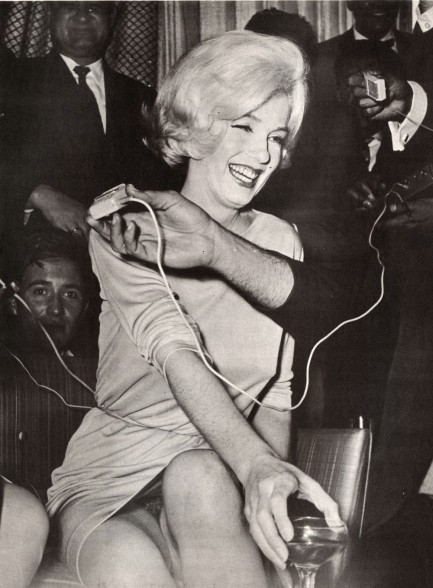
Marilyn Monroe was possibly the most photographed person of her era, but we bet most of you have never seen this shot. The divine Miss M. accidentally flashed a photographer while socializing at a May 1962 Democratic Party fundraiser in New York City. It was a semi-formal affair, but formality only applies to one's outer layer, clearly. To make matters even more interesting, this was the night she famously sang “Happy Birthday” to President John F. Kennedy.
The Pulp Intl. girlfriends love this shot, but when we pointed out that it might not be distinct enough, they got the implication right away and begged us not to do a zoom. Well, we can add that vain hope to the many others they've expressed over the years. Look below. The really interesting part is pondering whether Monroe's sugar cookie was out of the oven from the get-go, or if it happened during the fundraiser. Hmm... Were Monroe and Kennedy ever simultaneously absent that night? There's nothing quite like eating an extra dessert. 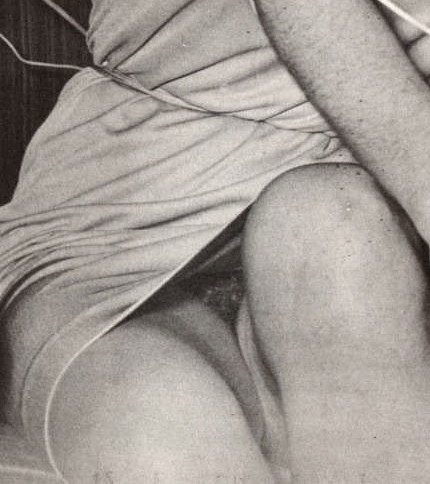
 Politics, show business, and sports collide in one of the U.S.'s oldest magazines. 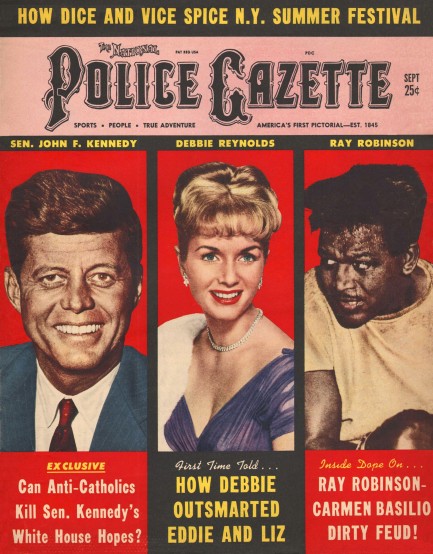
We've shared lots of issues of The National Police Gazette, but this September 1959 cover, more than others, neatly emphasizes the magazine's three focus areas—politics, celebrity, and sports. Dishing on political figures and celebs was typical for mid-century tabloids, but Gazette's devotion to sports made it unique. And its favorite sport was boxing. Every issue we've seen has reserved a chunk of pages for the sweet science. In this case the scientist is Sugar Ray Robinson, and the story about him discusses the rivalry he had with Carmen Basilio. The two fought twice when Robinson was in decline at the tail end of his career. Sugar Ray lost the first bout—considered by boxing historians to be one of the greatest fights ever—and a year later won the second. Every boxer declines, but Robinson's career record stands tall—he fought two hundred times and tallied 173 wins, 108 of them by knockout. But for all that hard work he ended up—as boxers often do—flat broke. Police Gazette was launched in 1845, as incredible as that seems, and was still going strong more than a century later when this issue appeared. We have about twenty-five scans below and seventy-five more entries on Gazette in the website comprising many hundreds of pages. The easiest way to access those, as well as numerous other mid-century tabloids, is via our tabloid index located here. 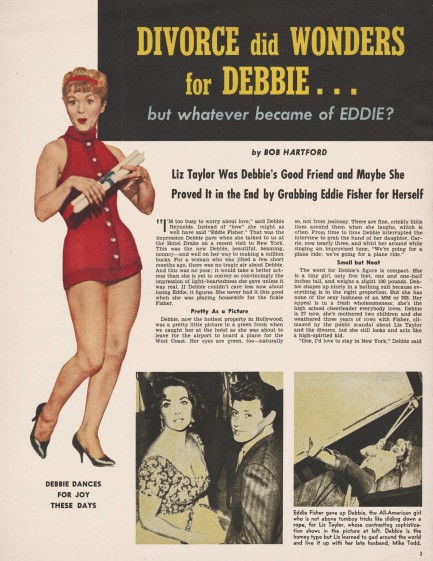 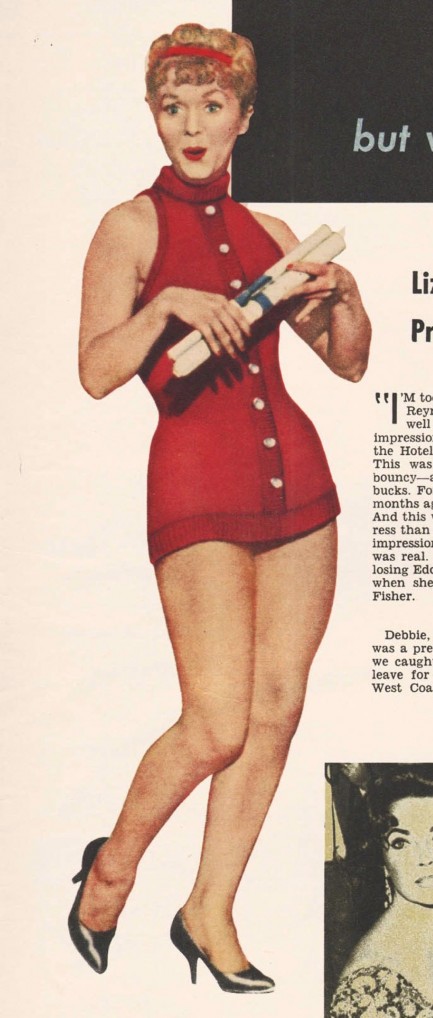 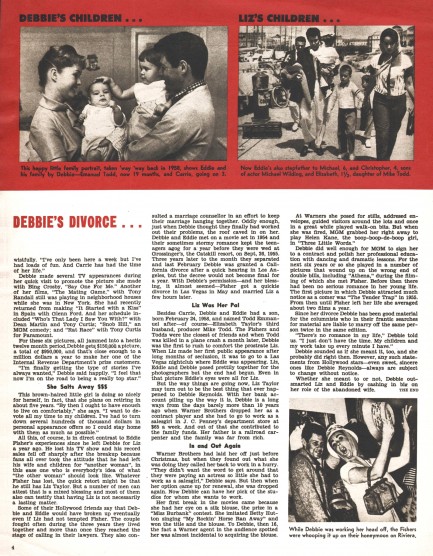 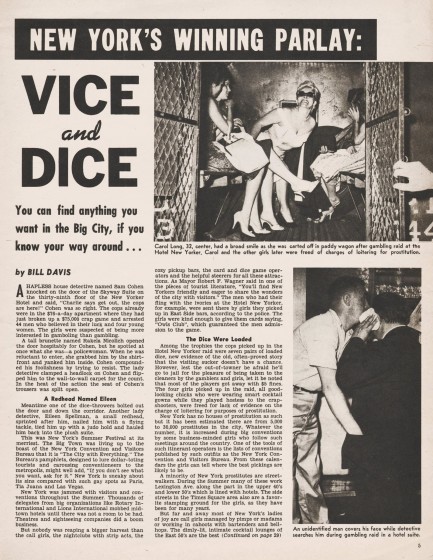 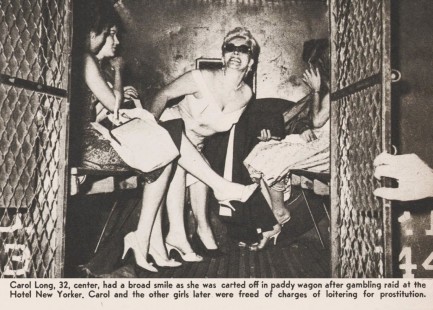 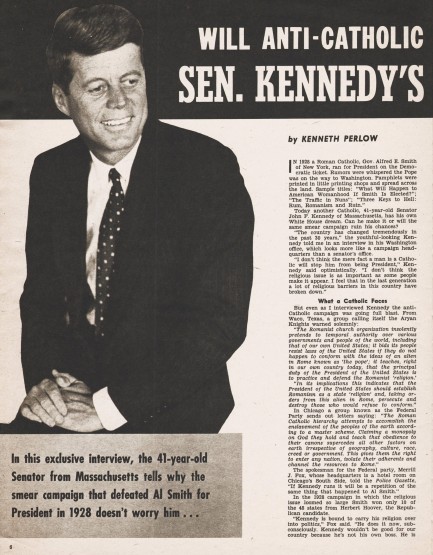 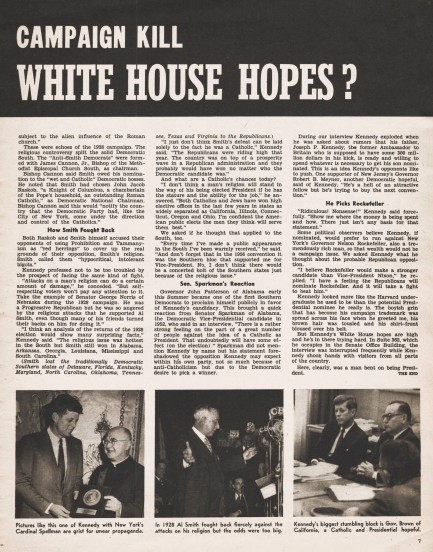 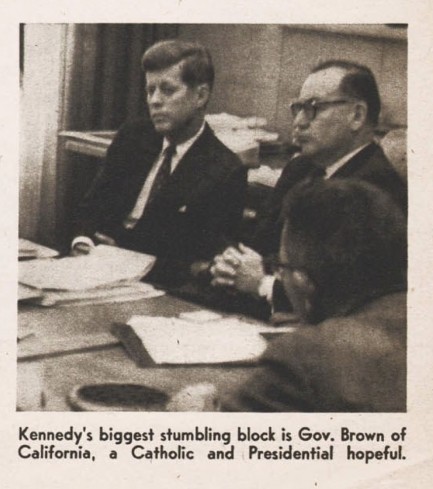 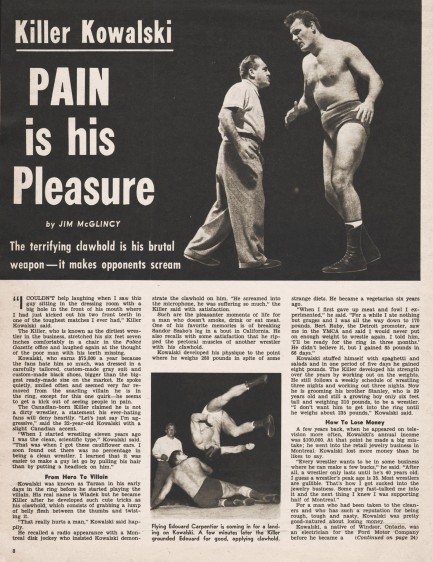 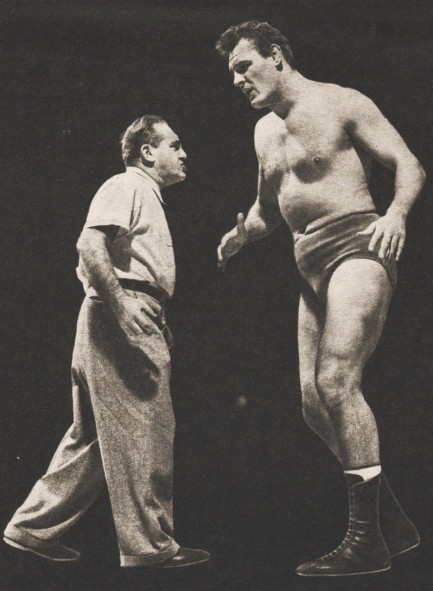 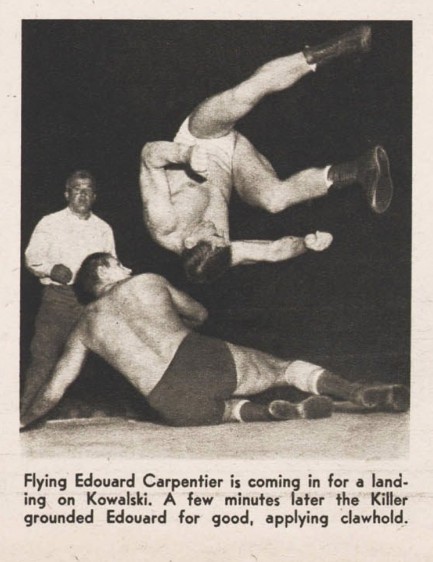 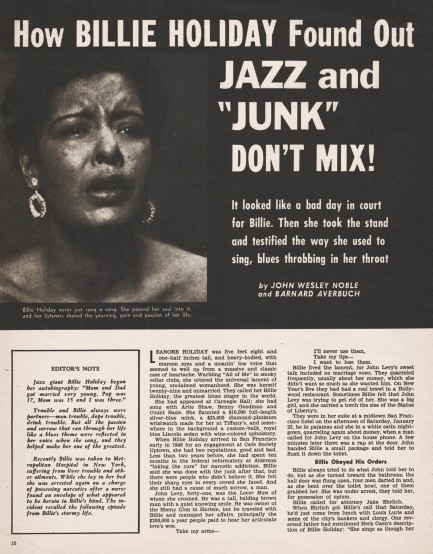 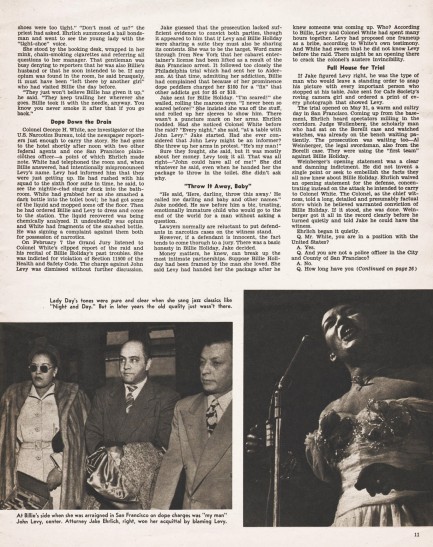 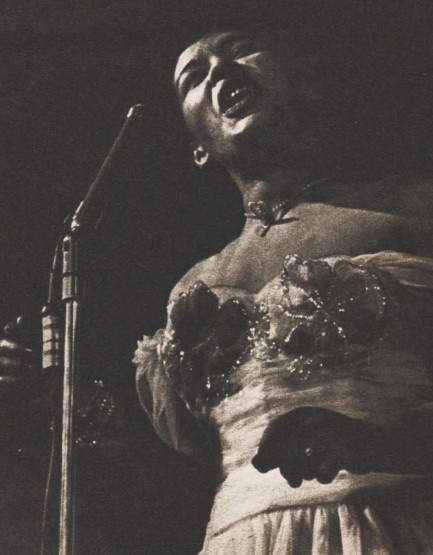 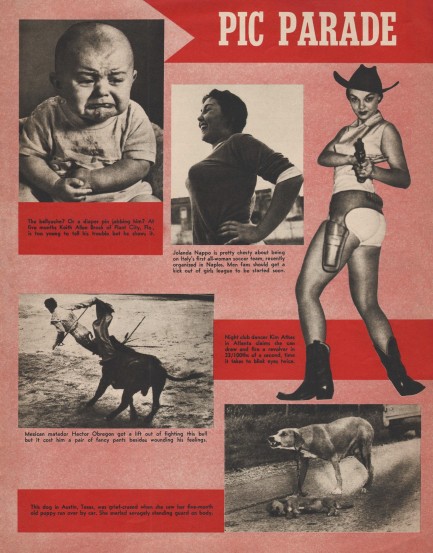 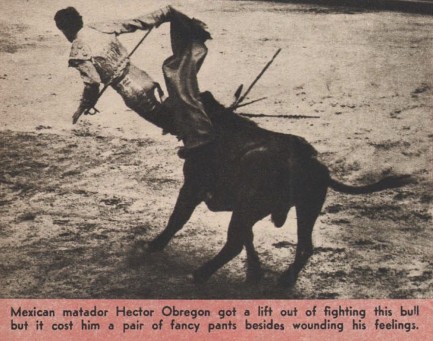 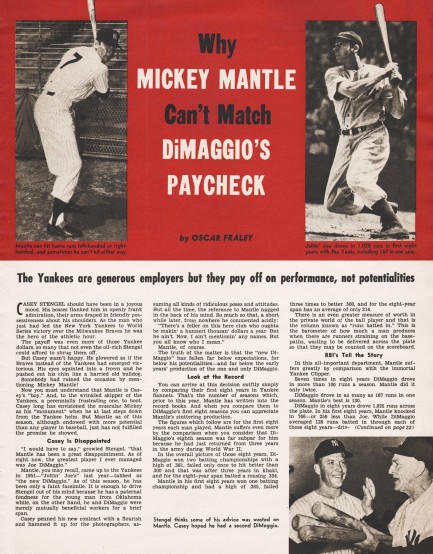 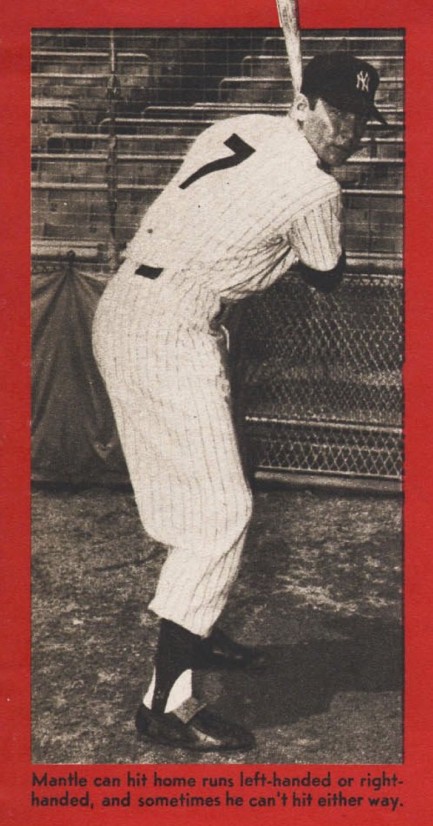 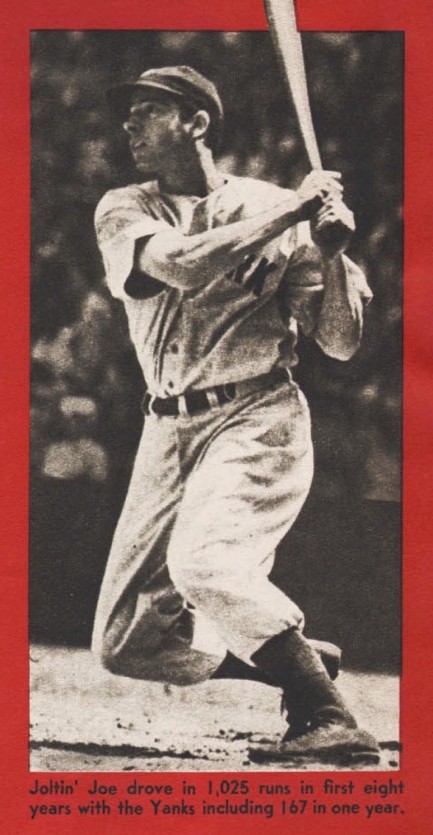 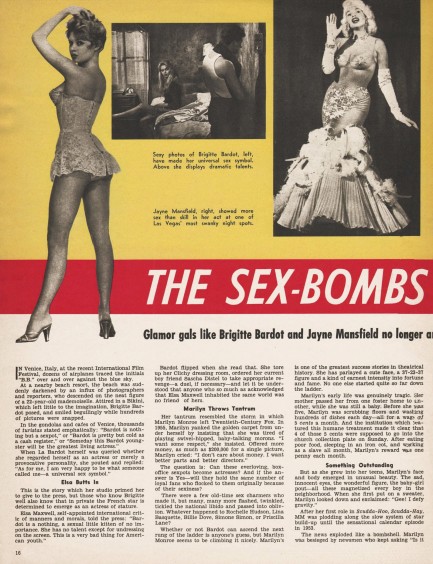 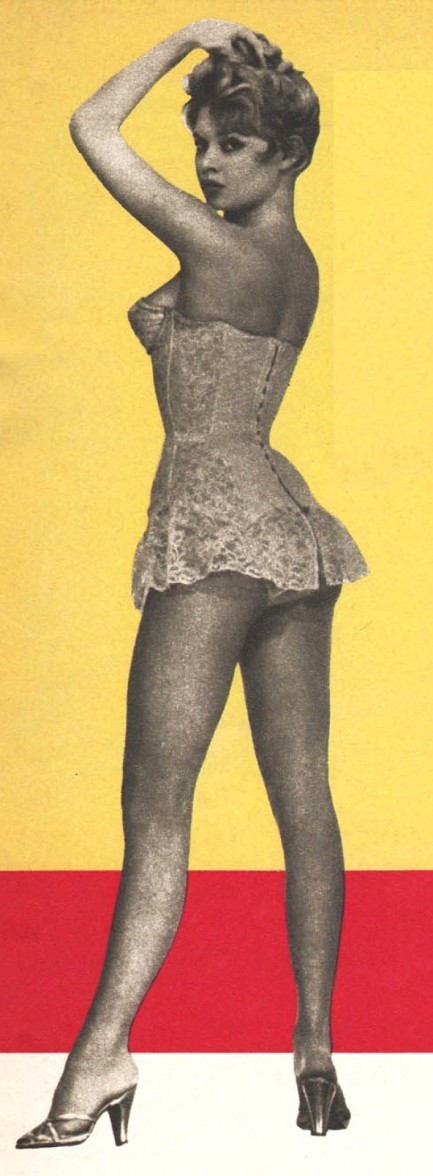 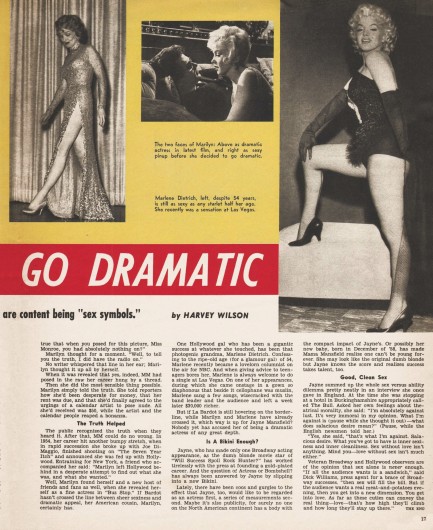 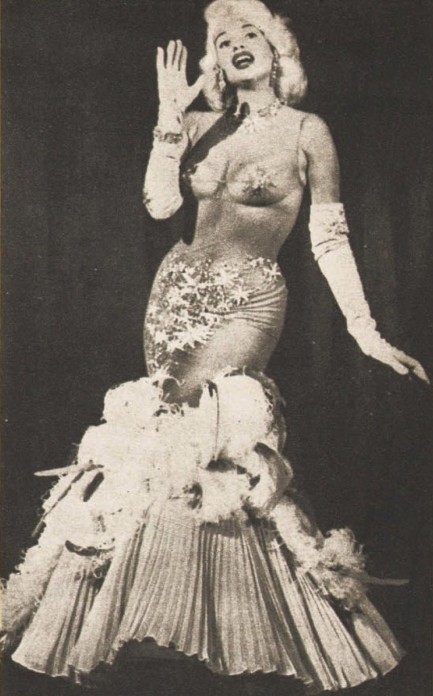 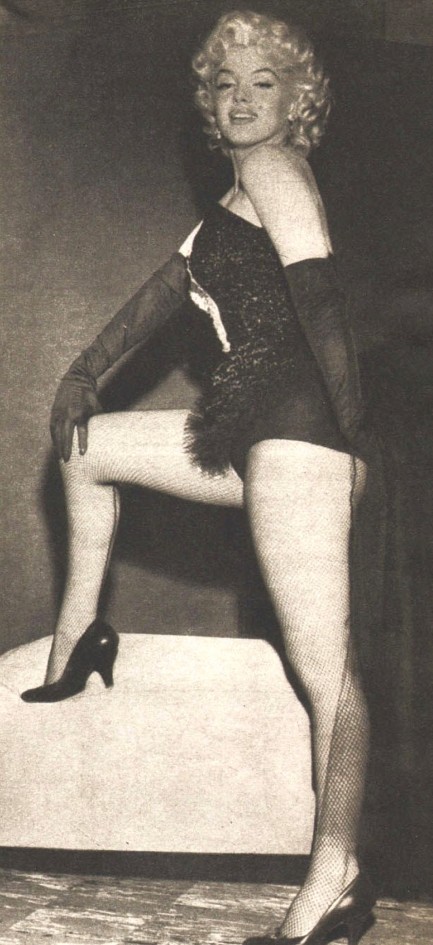  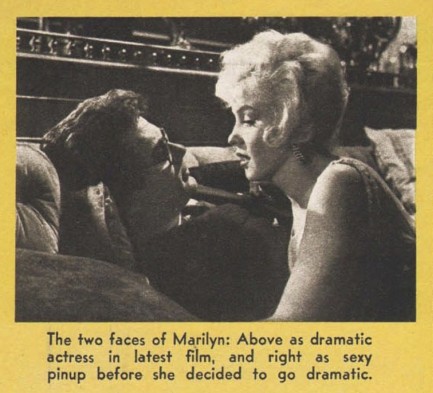 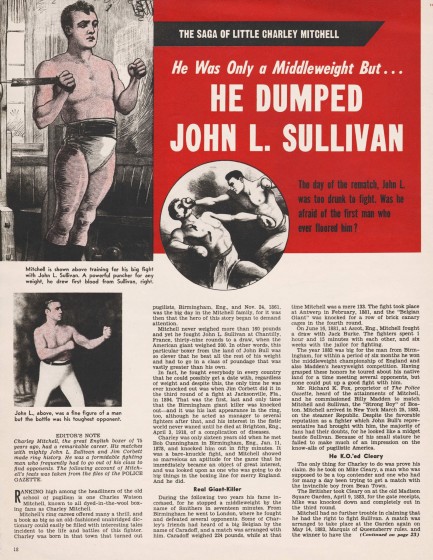 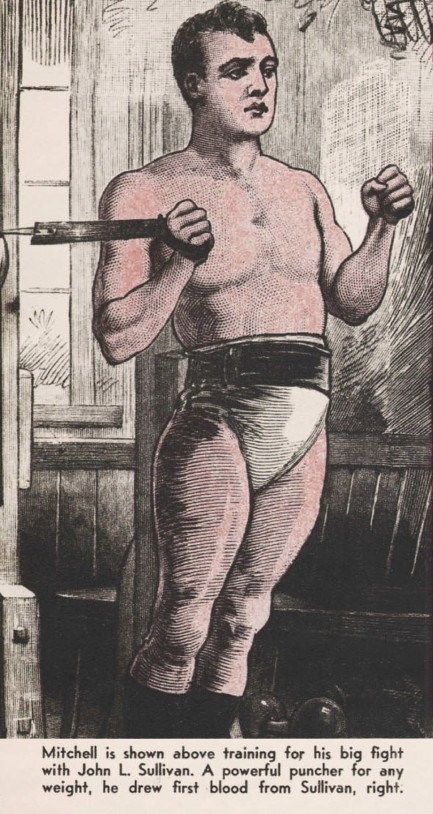 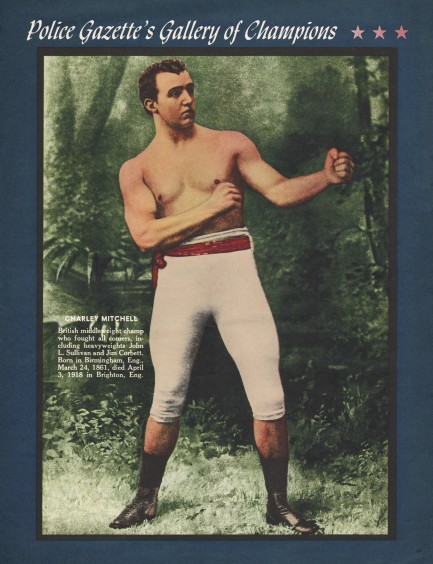
 Comic book icon Stan Lee goes Hollywood. 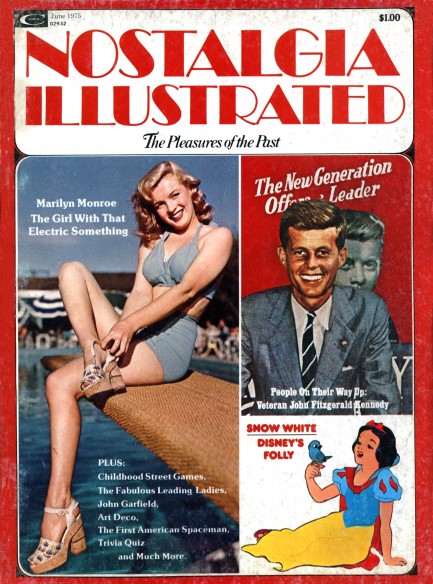
Nostalgia Illustrated was a New York City based magazine published by none other than comic book kingpin Stan Lee. It debuted in November 1974, with the issue you see here coming this month in 1975. It's exactly as its title suggests—a collection of vintage photos of American icons. We imagine Lee wanted to get into the burgeoning tabloid market, but one that didn't go full Hollywood gossip. Instead the stories are more along the lines of respectful bios, which makes it less tabloid than fanboy publication.
Except for the cover, its design is nothing special, but it contains a wealth of old Hollywood photos we haven't seen before, which makes it worth a share. You get John Garfield, Betty Grable, Marilyn Monroe (because what's a nostalgia magazine without her?), a youthful John F. Kennedy, and many other celebs. There's also a story on John Lewis Roventini, the “world's smallest bellhop” at four feet in height, who was famous in New York City for a time. All in thirty scans below. 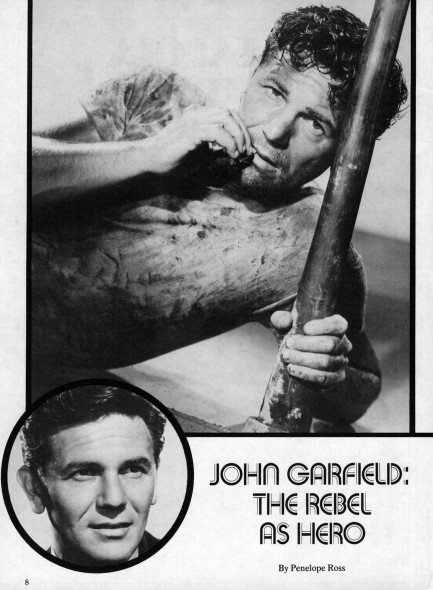 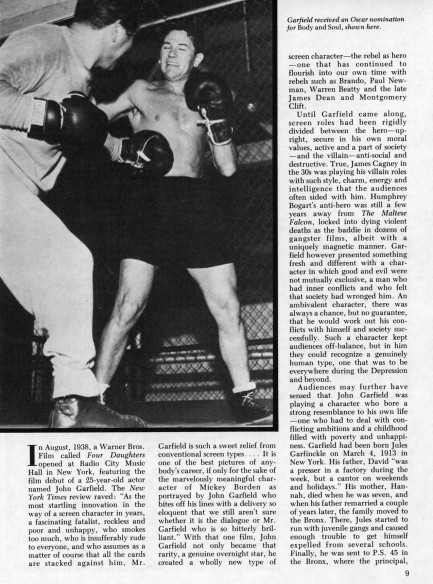 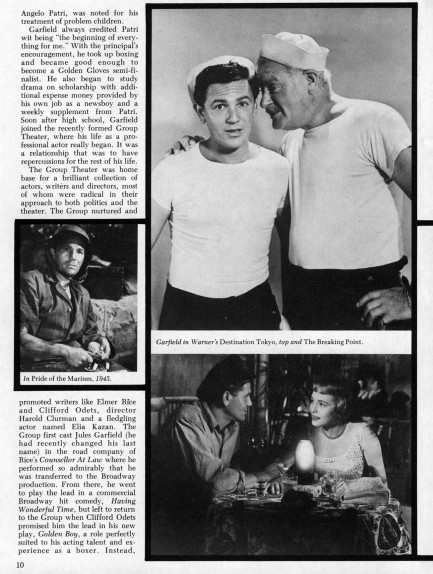  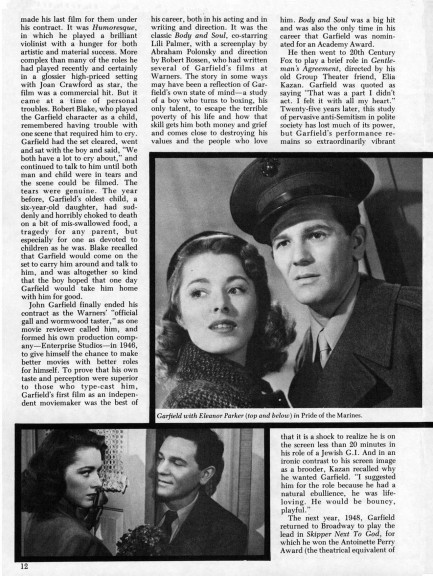 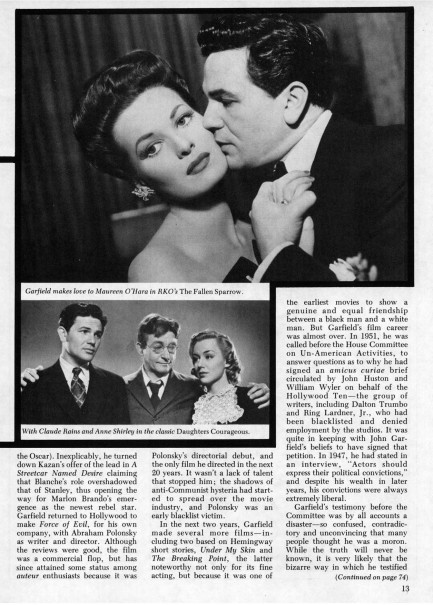 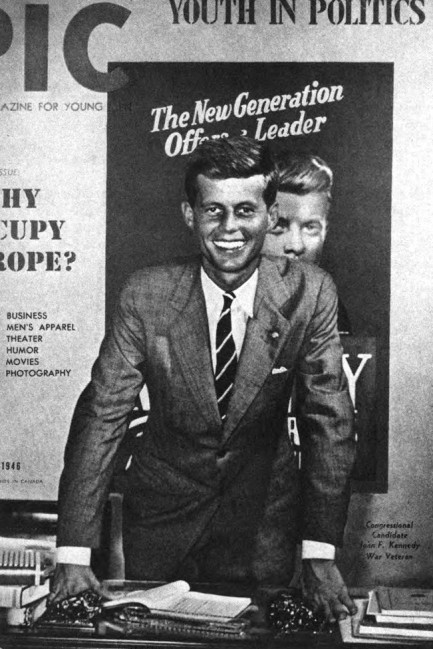 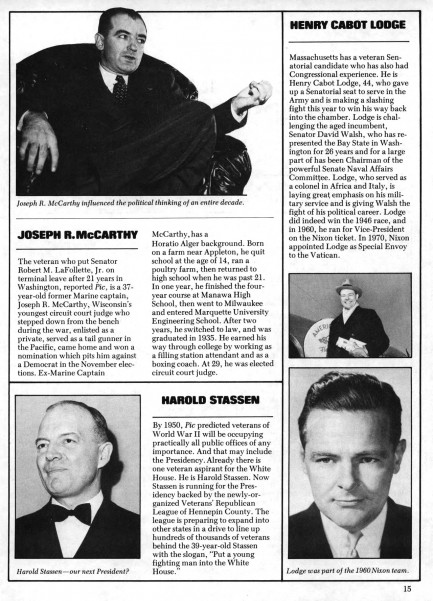 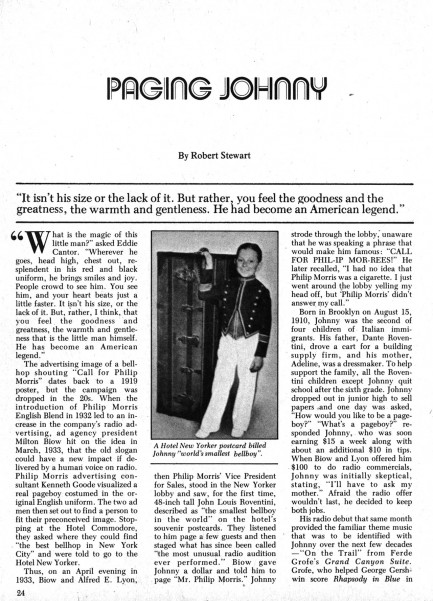 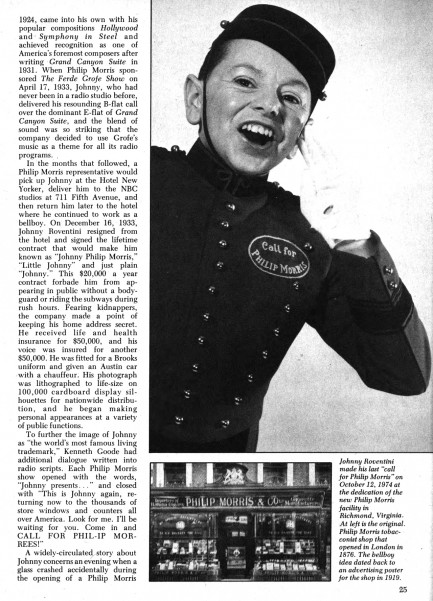 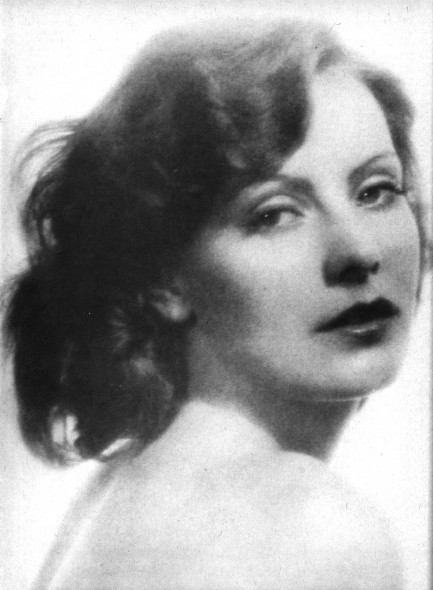 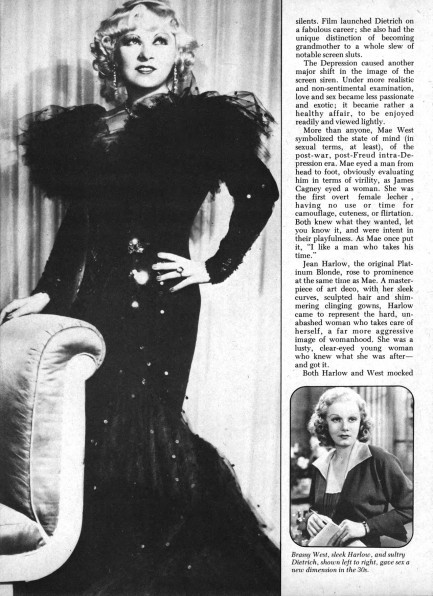 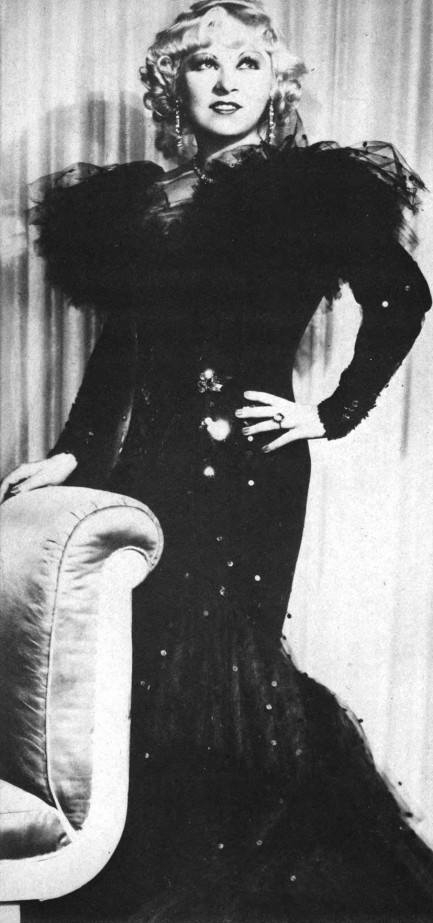  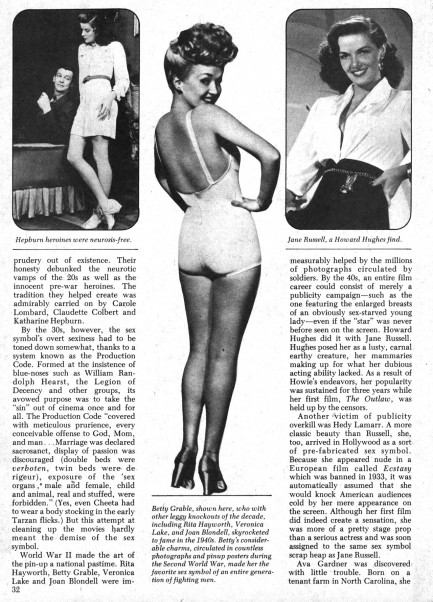 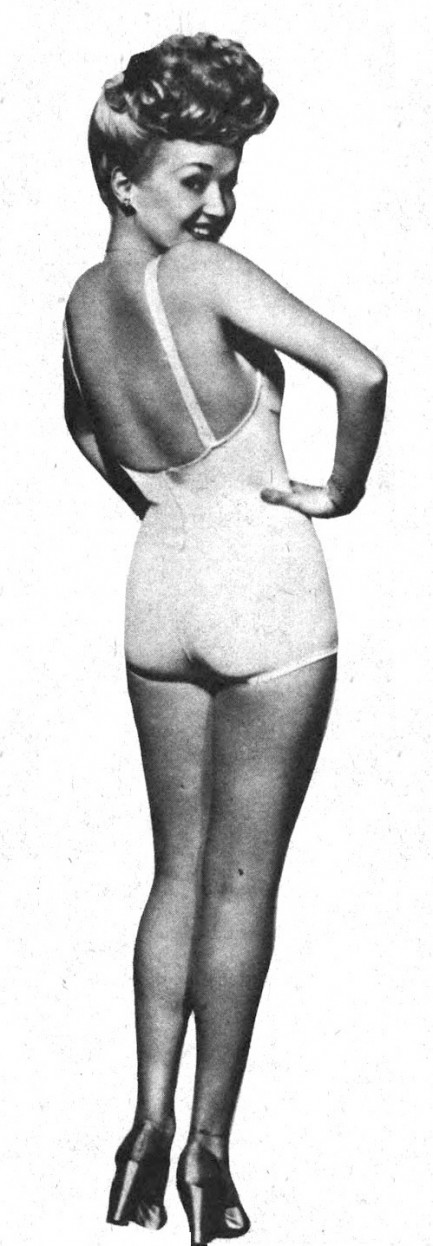 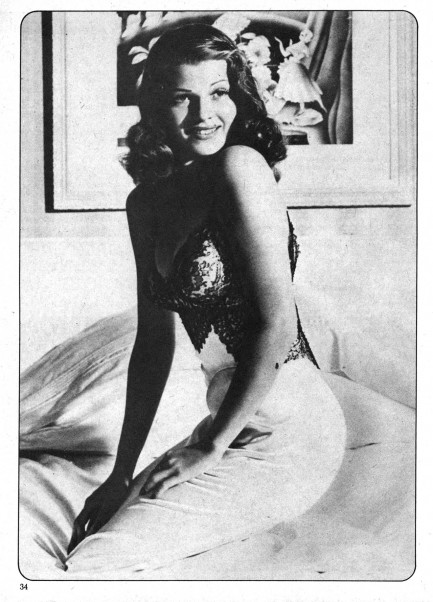 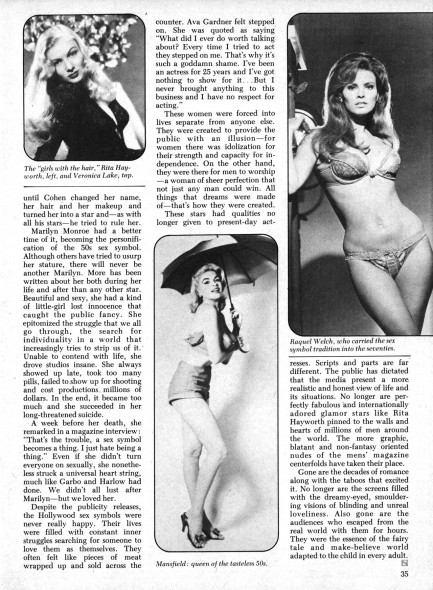  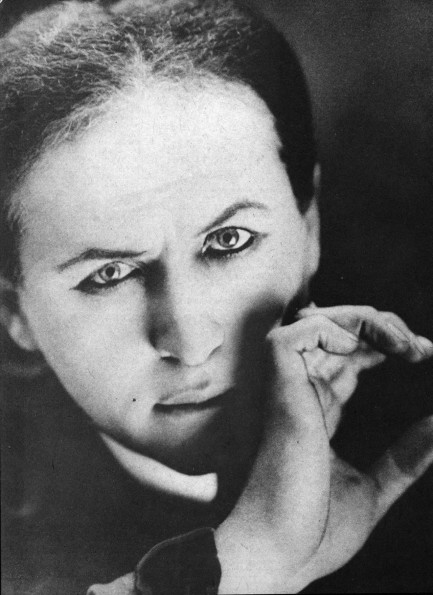 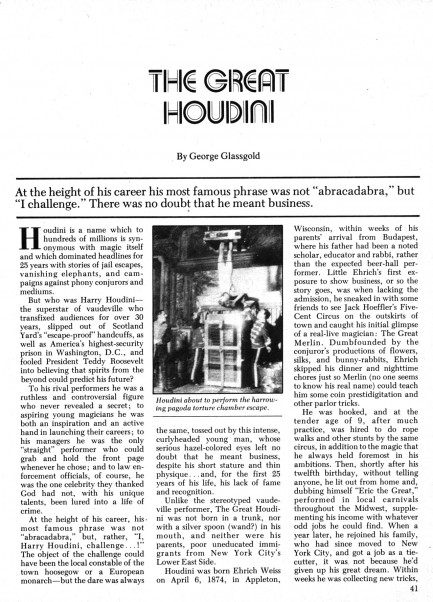 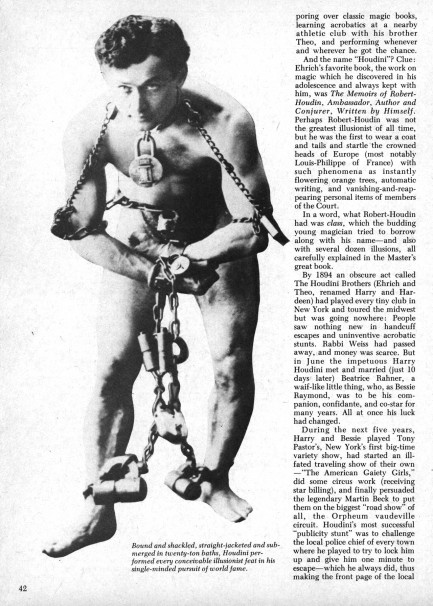 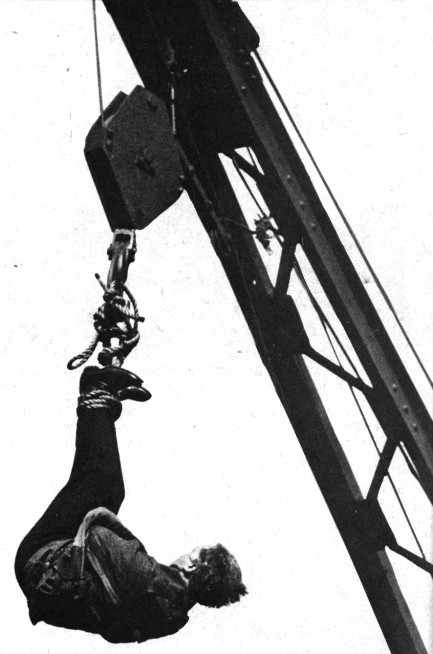 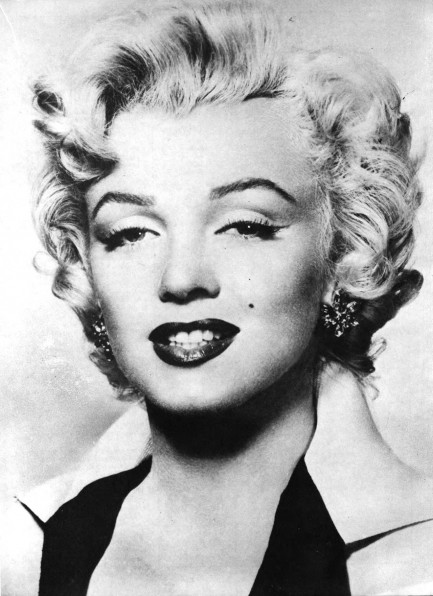 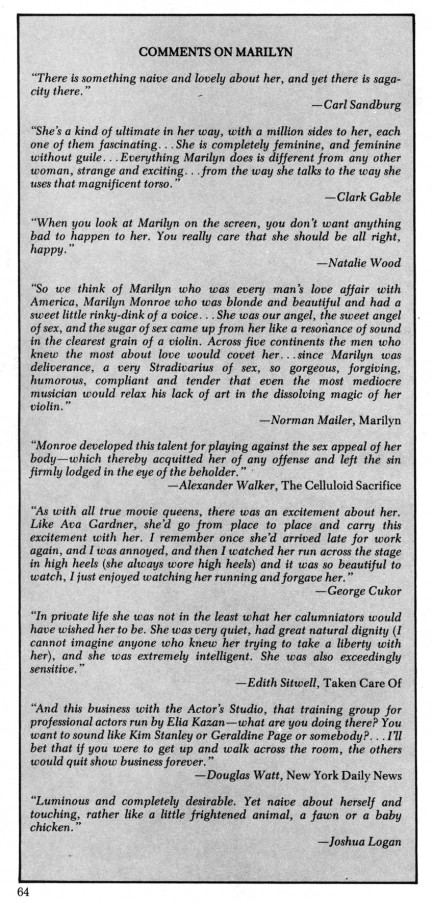 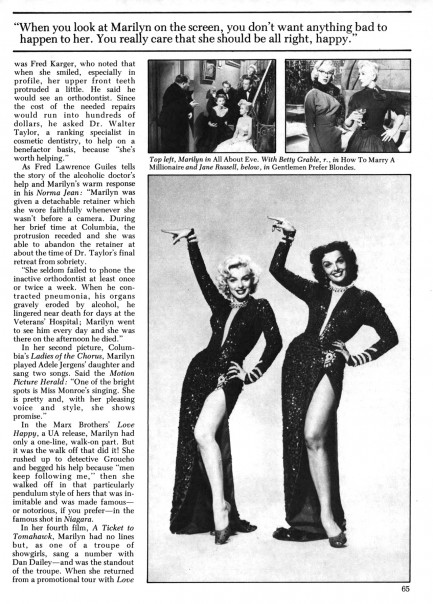 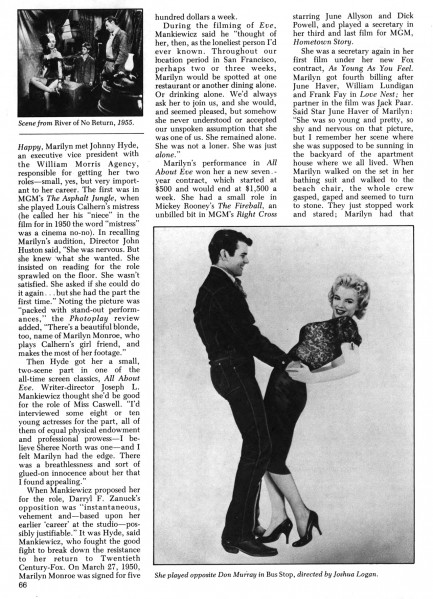 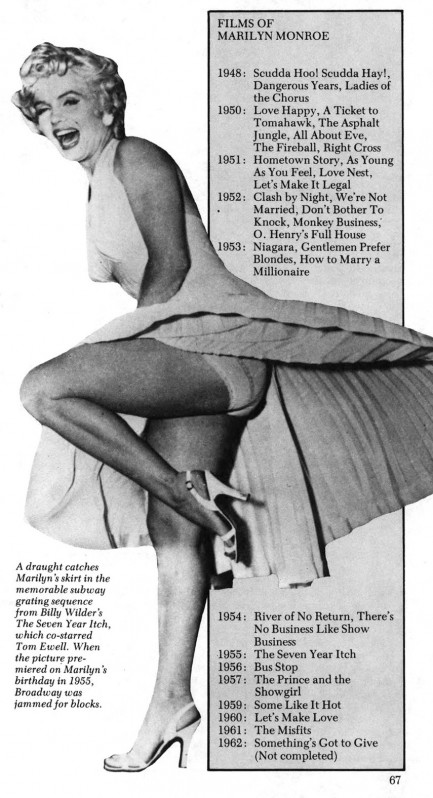 
 They all screwed people but only one of them wanted the public to watch. 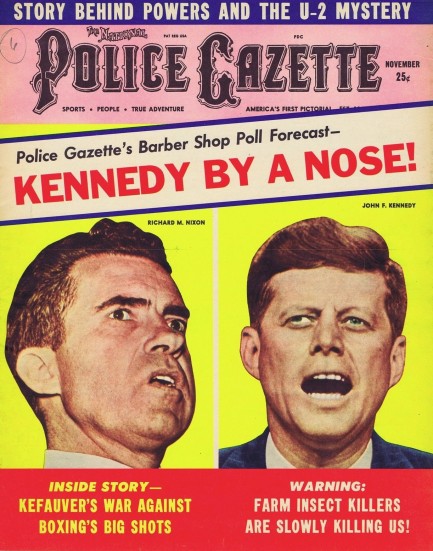 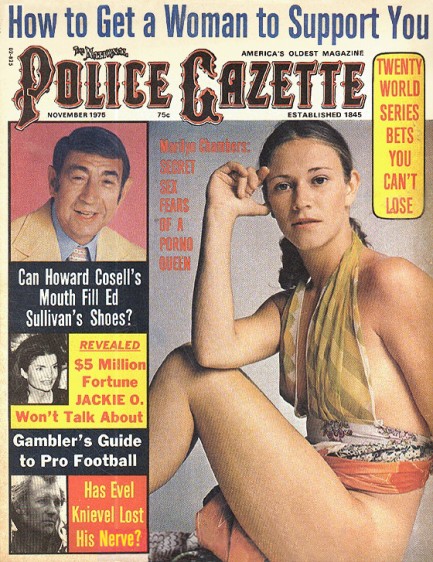
We were fishing around online and found a couple of November covers of The National Police Gazette, both quite interesting, issued fifteen years apart. On top you have Gazette editors predicting a 1960 election victory for John F. Kennedy over Richard Nixon “by a nose!” They were right about that, though Nixon would become president later and his nose would grow greatly. Meanwhile Kennedy had his own fun with a piece of anatomy that got bigger, if reports are to be believed. The second cover features a very nice image of Marilyn Chambers from 1975, whose specialty was making other people's body parts swell in x-rated films. The shot comes from the same session that produced this rare image we shared back in 2011. We still have a pile of Gazettes but we've been very lazy about scanning them because of the requirement to scan each page in two parts then join them in Photoshop. It's a pain, so we tend to focus on smaller magazines whose pages we can scan in one piece. But we'll get to those Gazettes eventually. Promise.
 Nothing impresses a girl like nice hard rod. 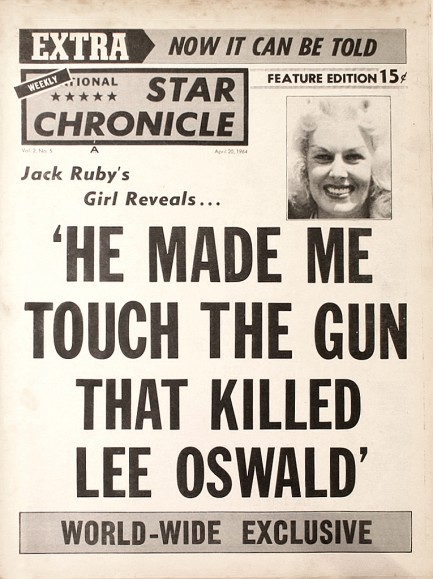
Jack Ruby was a nightclub owner, which of course meant he knew many women. After he shot and killed Lee Harvey Oswald several formerly obscure or mildly famous women became widely known for their associations with Ruby, including Gail Raven, Candy Wells, and Candy Barr. This cover of National Star Chronicle from yesterday in 1964 shines the spotlight on another Ruby acquaintance—Tammi True. Born Nancy Myers, True danced at Ruby's Dallas nightspot the Carousel Club. She kept her career under wraps, but when Ruby shot Oswald she was identified as a Ruby associate and her anonymity evaporated. National Star Chronicle is one of many tabloids that delved into True's life.
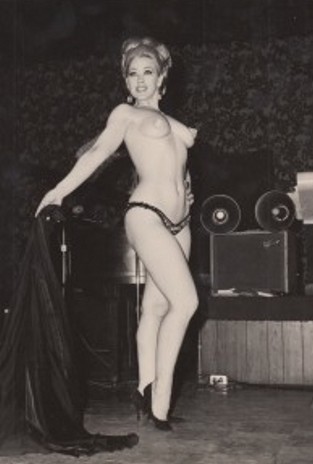 Is its headline about her touching the gun that killed Oswald factual? Well, Ruby was arrested at the scene of the shooting. The only time True could have touched the gun was before the murder. Ruby always carried a weapon because he always had club receipts on him, so it's very possible he let True handle it at some point, but True has never confirmed the story. The main reason we tend to doubt it is because she has always been vocal about how angry she was to be outed as a stripper. Before the shooting only her friends and family knew she danced. We can't imagine her sitting down and giving Chronicle an interview. But you never know. See more from National Star Chronicle by clicking here or here. Is its headline about her touching the gun that killed Oswald factual? Well, Ruby was arrested at the scene of the shooting. The only time True could have touched the gun was before the murder. Ruby always carried a weapon because he always had club receipts on him, so it's very possible he let True handle it at some point, but True has never confirmed the story. The main reason we tend to doubt it is because she has always been vocal about how angry she was to be outed as a stripper. Before the shooting only her friends and family knew she danced. We can't imagine her sitting down and giving Chronicle an interview. But you never know. See more from National Star Chronicle by clicking here or here.
 A presidential brain goes missing—it was the first of many. 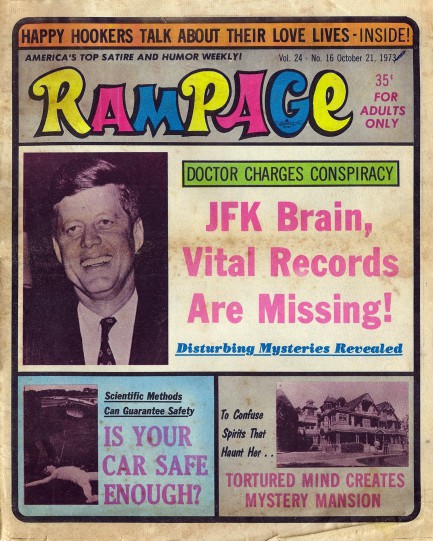
Rampage finally gets one right on the cover of this issue that appeared on newsstands today in 1973—John F. Kennedy’s brain really did go missing. It happened in 1966. Well, better to be right late than never. To this day there’s no official explanation for what happened to JFK’s brain, which had been stored at the National Archives in Washington, D.C. after his autopsy. The most credible theories center on family members ordering it taken to conceal evidence that Kennedy was sick or on medication. Amazingly, later presidential brain removals occurred while their hosts were still alive. No signs of cognition were present in these men, yet they walked, talked, and in zombielike trances signed laws written by corporations and billionaires. Something else that’s missing is a chunk of this Rampage. Where did it go? We have no idea, but we roundly reject theories one person was the culprit—it was clearly a group that committed the deed. Though it’s a partial paper, we bought it anyway because it was only a dollar. And it was worth it. Inside, we learned that kissing won’t spread colds, but does shorten life spans; we were introduced to ambitious stripper Sandy O’Hara, who may be the first of her profession to debut in tabloids and later achieve her ambition of appearing in movies; and we learn Cher is on the verge of jettisoning Sonny. Scans below, and more from Rampage in our tabloid index. 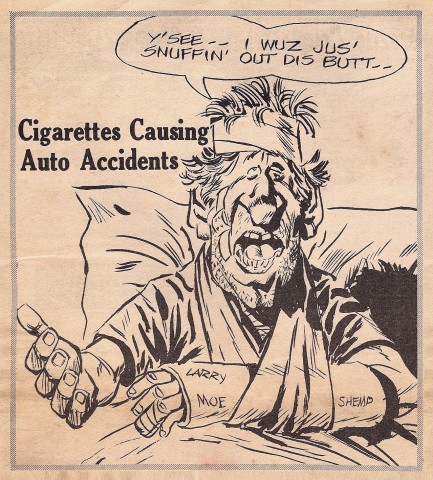 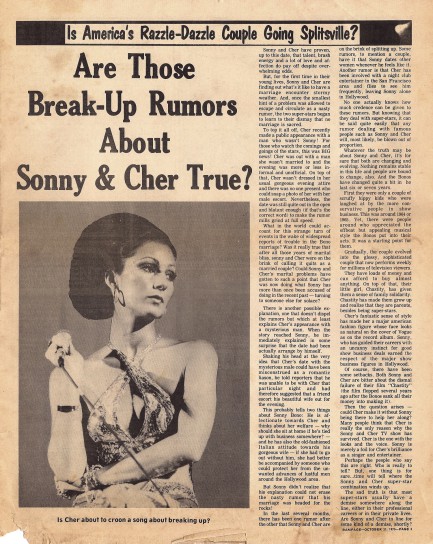 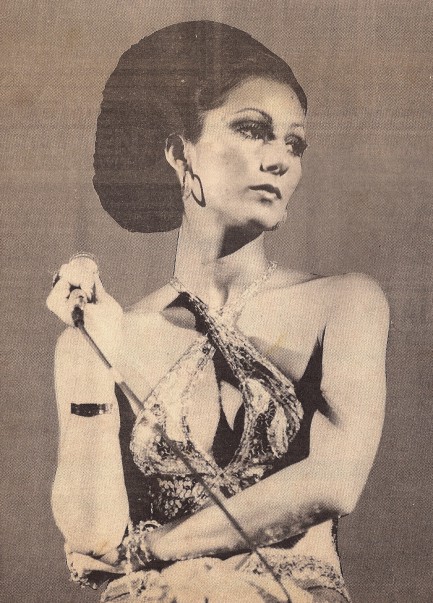 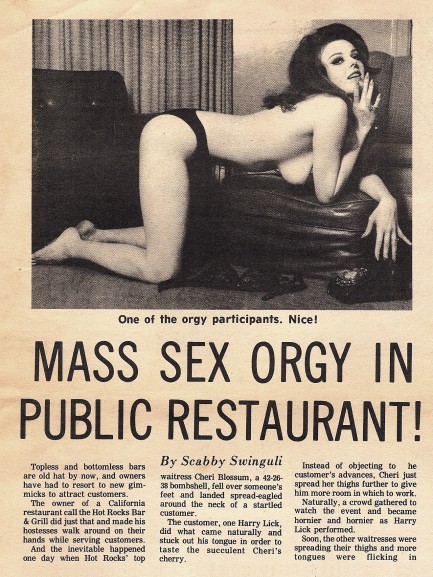 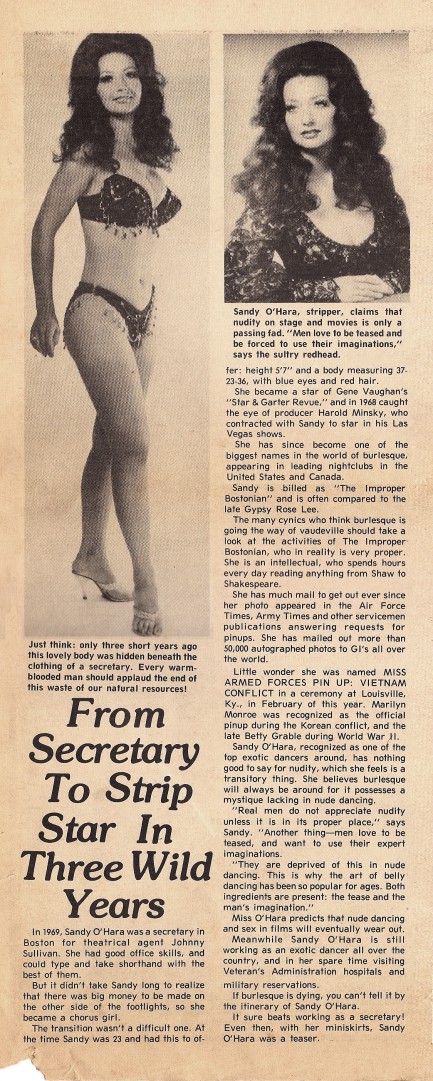 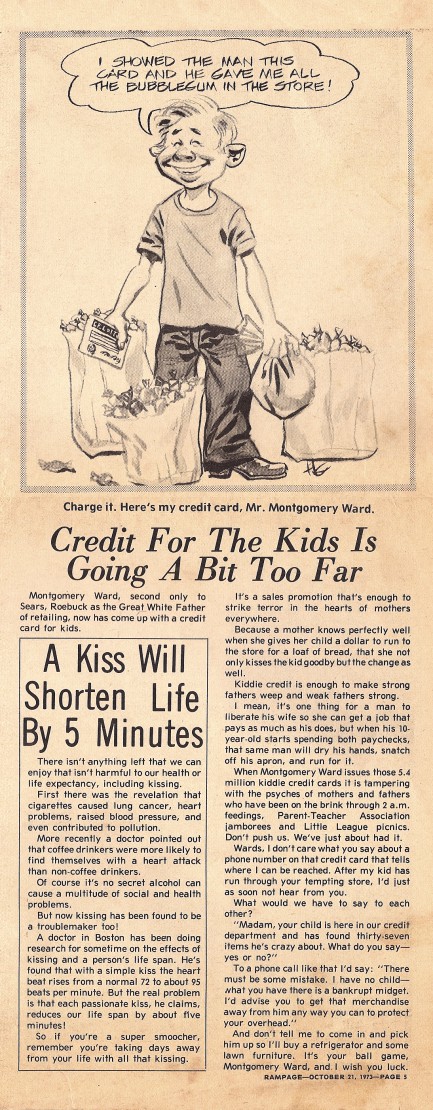 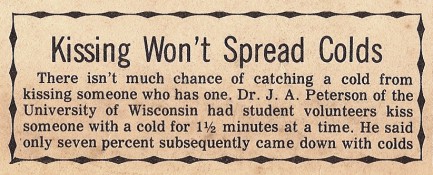 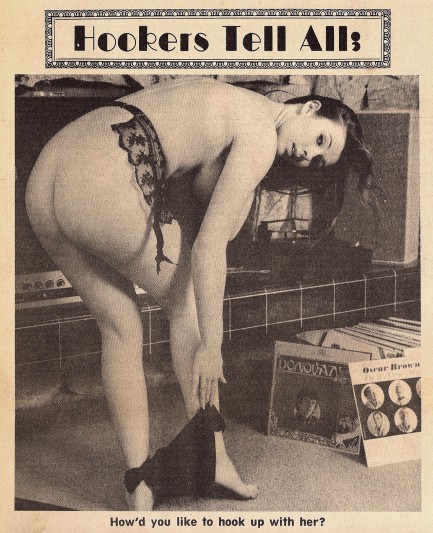 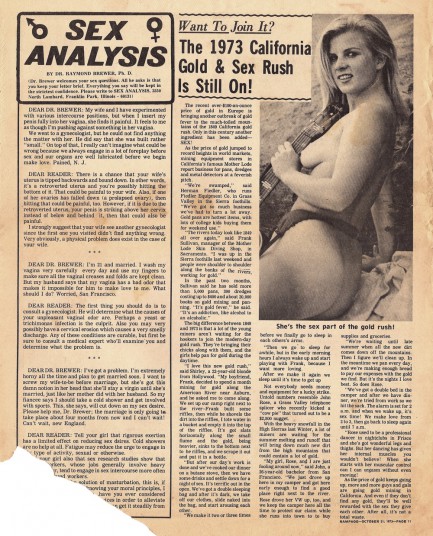 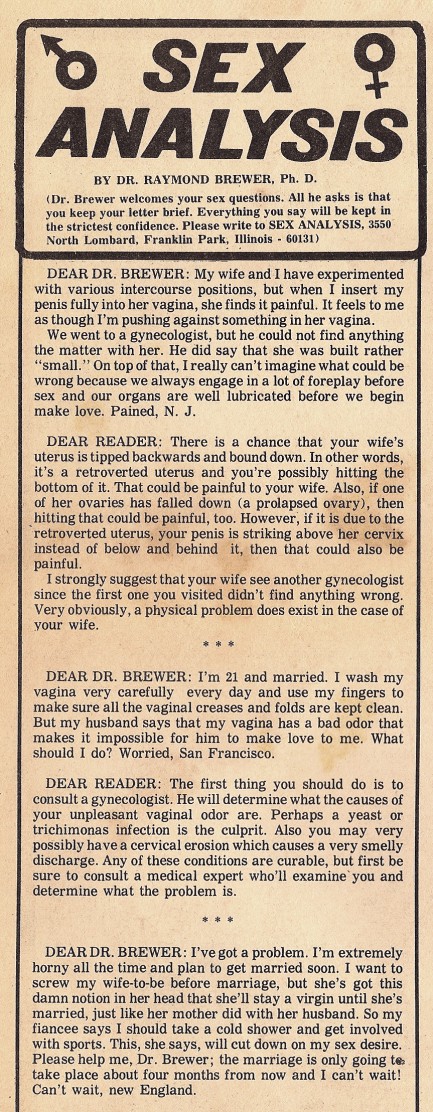  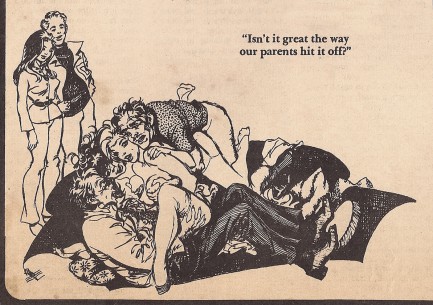
 Times may change but sex always sells. 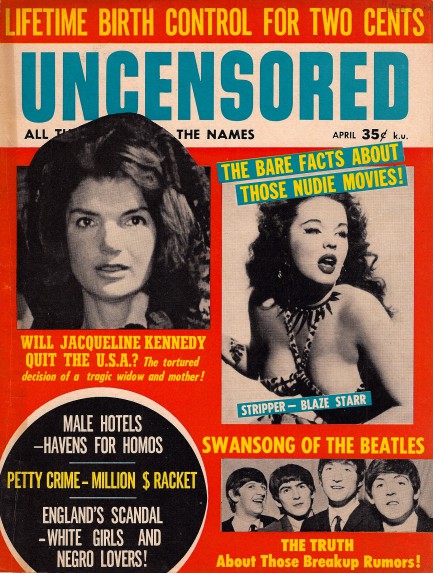
Above is the front of a copy of Uncensored magazine that appeared today in 1965 with cover stars Jackie O., Blaze Starr, and—in a sign of changing times—the Beatles. Inside the magazine you get sin and skin in the form of East German sex camps, nudity in international cinema, exotic dancer Marlene MacLane, transgender entertainer Christine Jorgensen, and call girl Christine Keeler, who, Uncensored reminds readers yet again, had lovers with skin darker than hers. And according to journalist Bill Jeffree, so did thousands of other British women. What had the world come to? These old tabloids often contain photos that haven’t made it online yet, and from this one we’re happy to upload a cool shot of Keeler, a snap of John F. Kennedy, Jr. as a toddler, and a rare vision of Elizabeth Taylor strolling a Mediterranean boardwalk in her bikini. We have about twenty scans below and more from Uncensored to come. 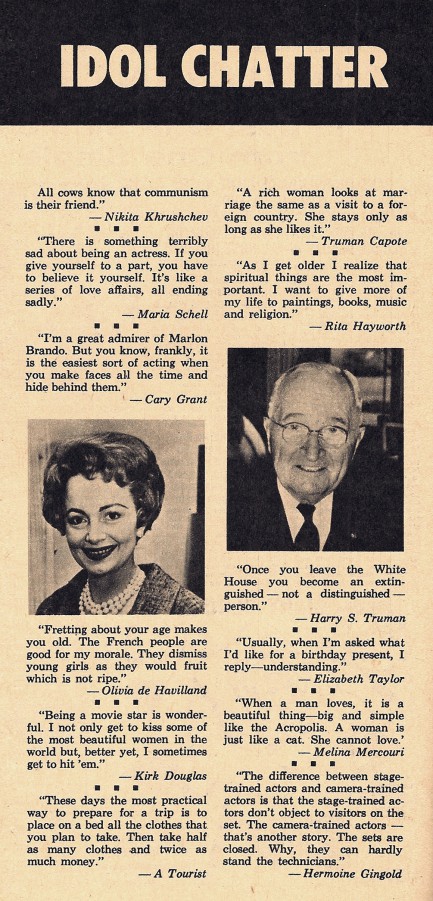 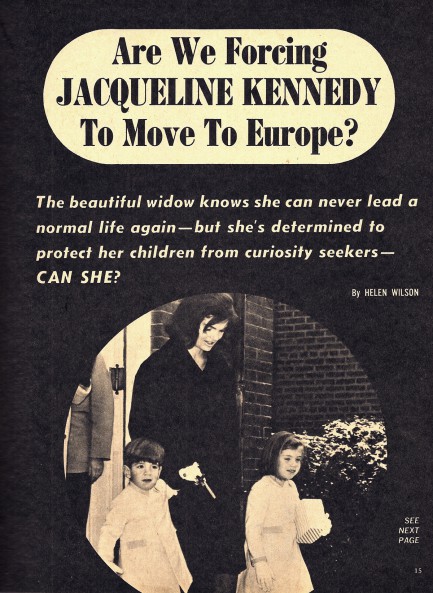 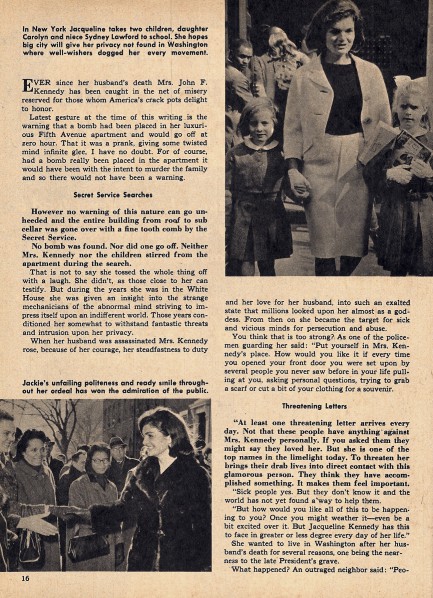 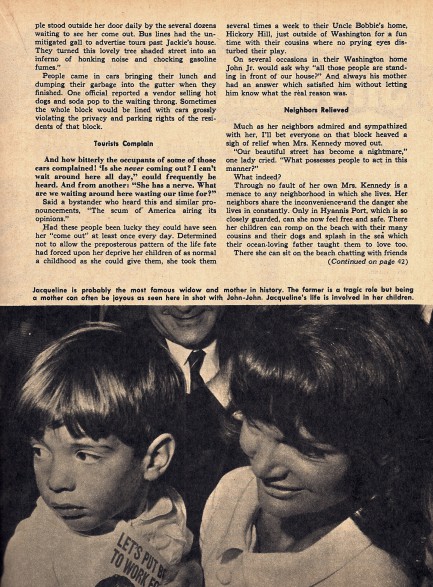 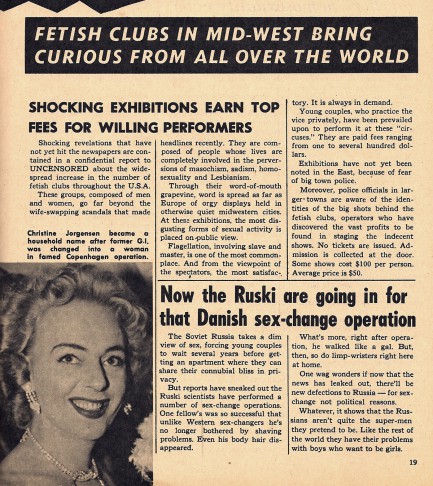 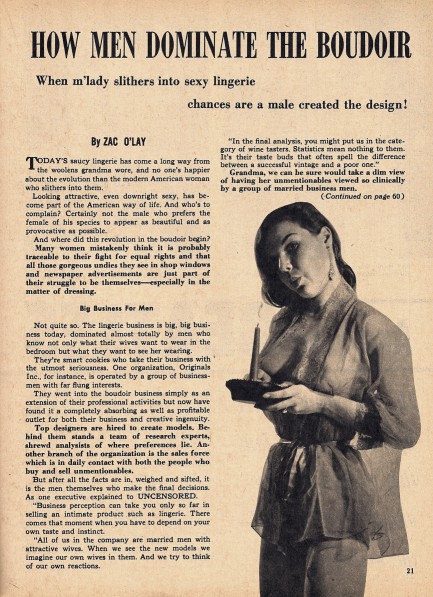 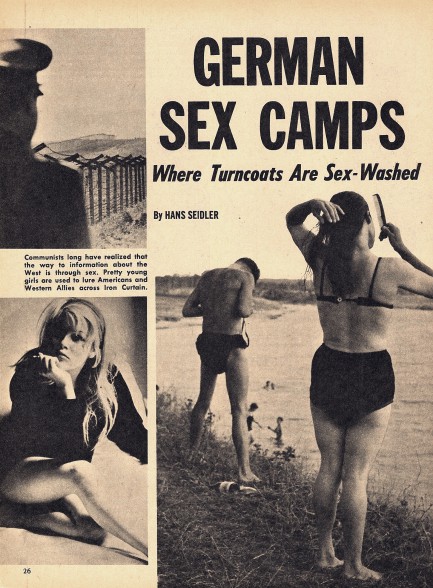 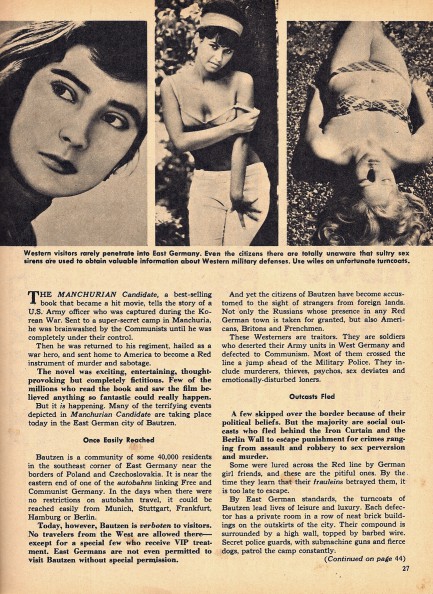  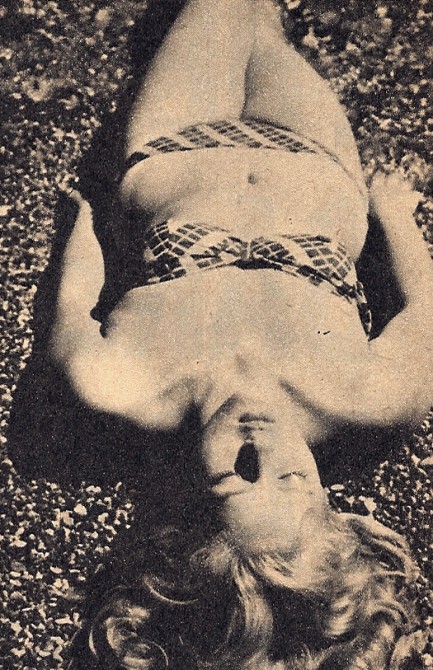 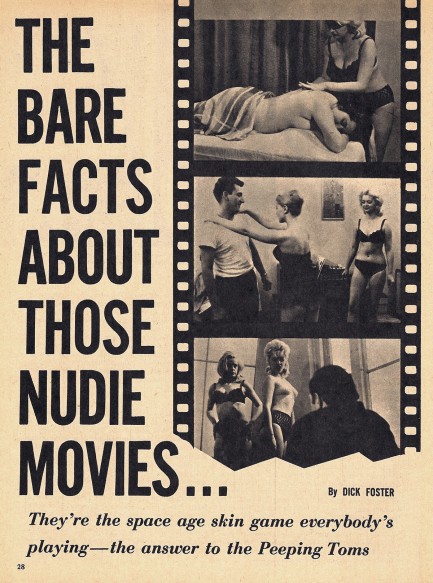 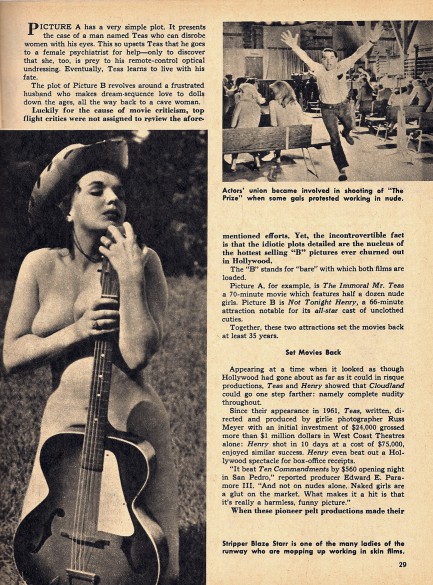 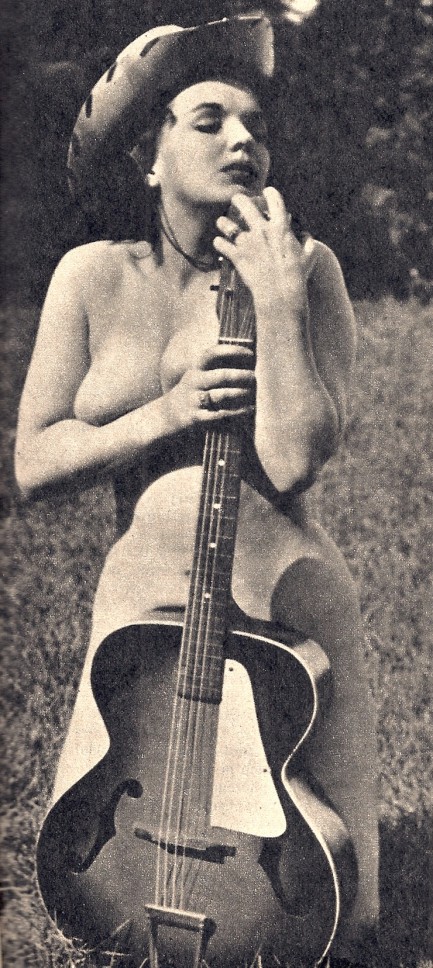 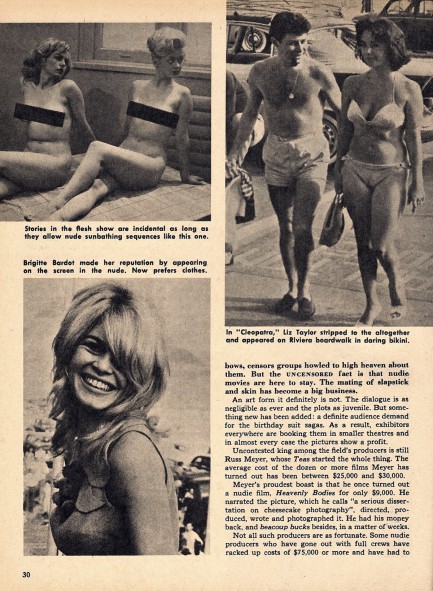 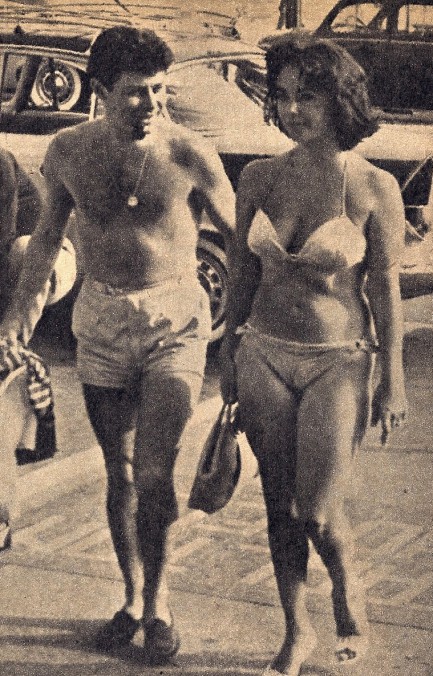 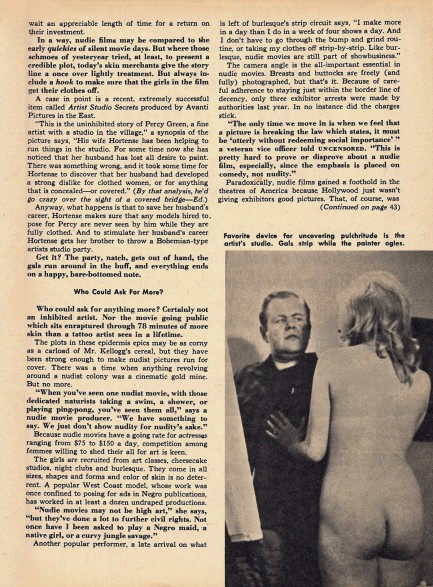 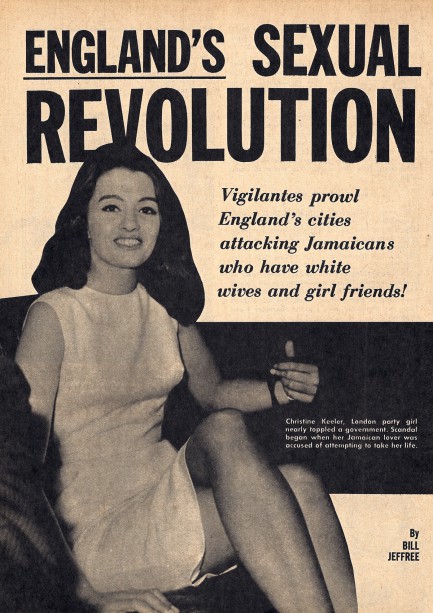 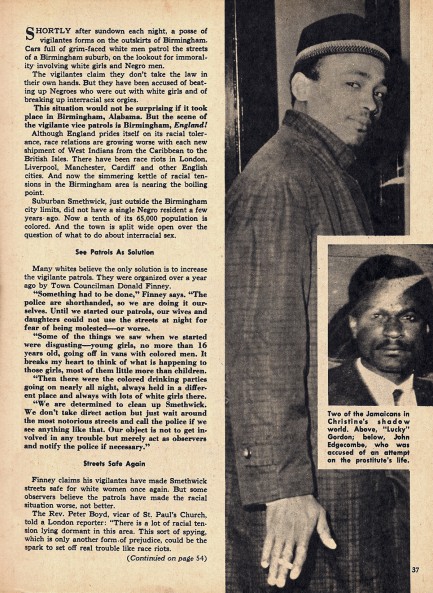 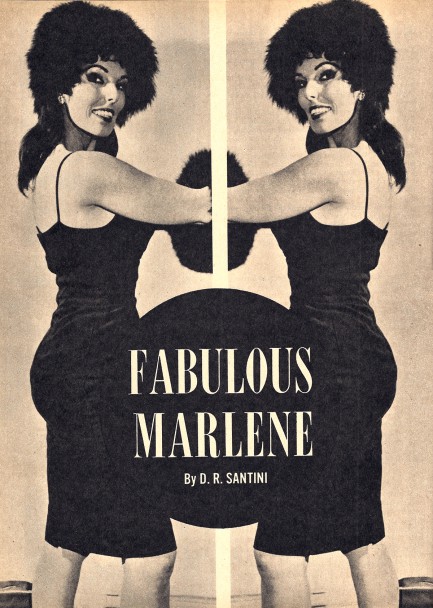 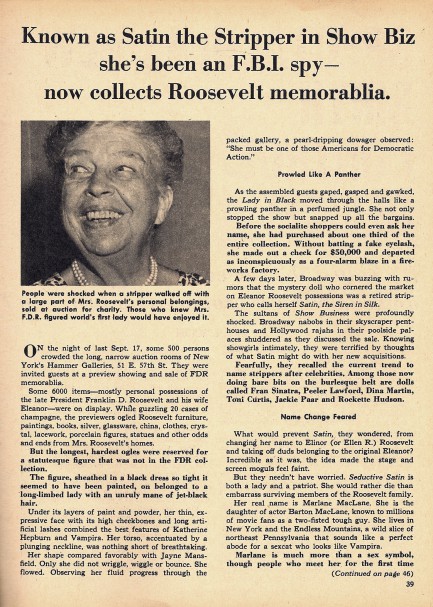 
 Mercocomic re-imagines one of the darkest periods in American history. 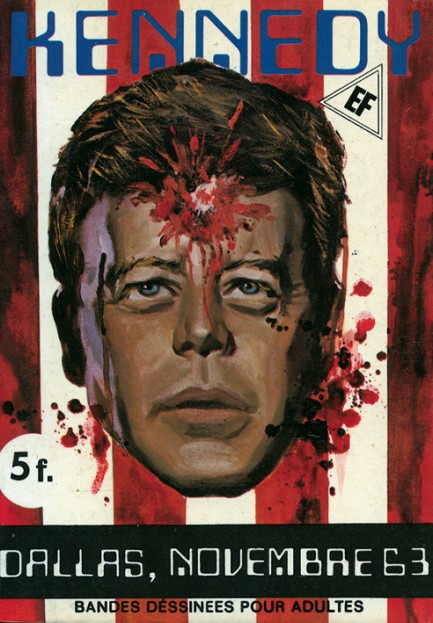 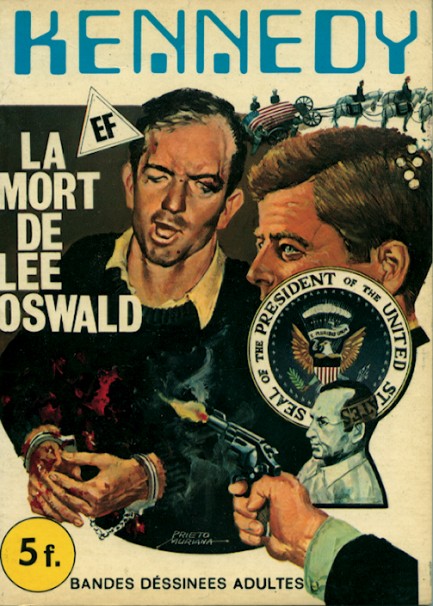 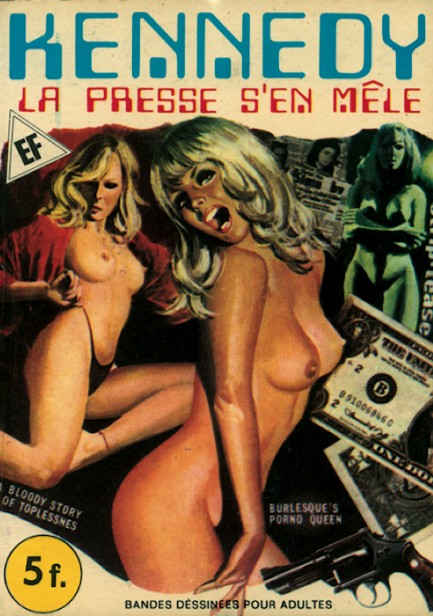 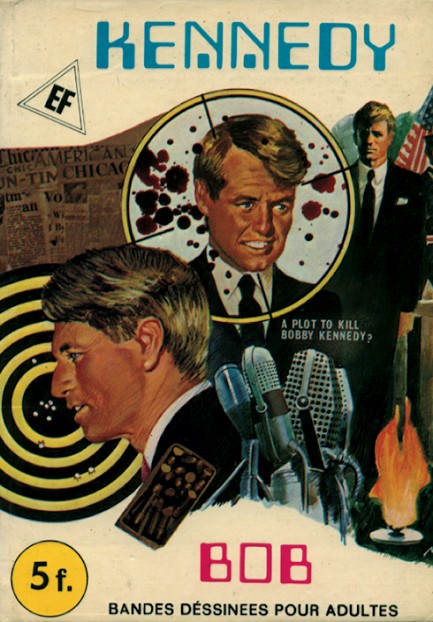 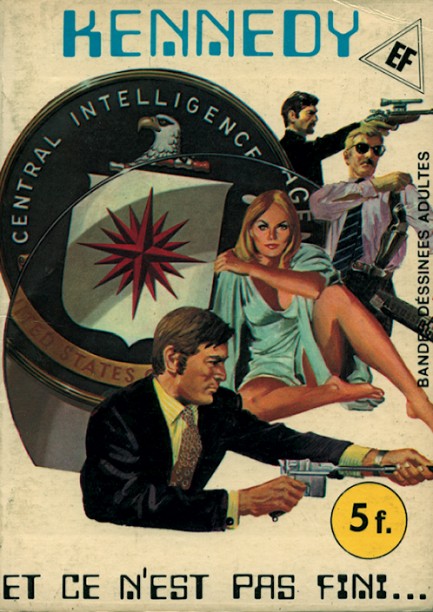 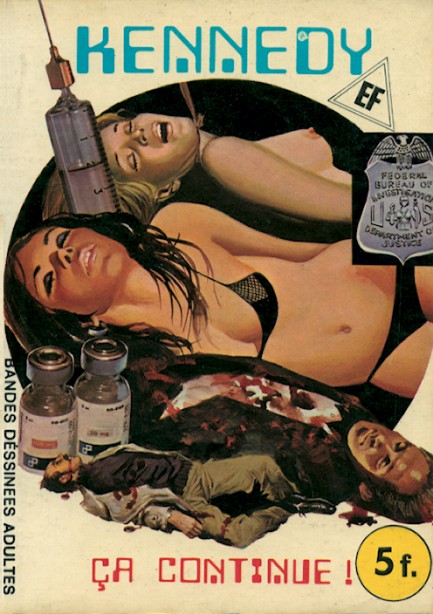
A long while back we shared a Spanish cover of the Mercocomic publication Kennedy and mentioned that a series of six appeared in 1977. The same comics were also published in French, so today, inappropriately, we’re sharing those six covers from France with their excellent if unsettling art by Prieto Muriana. Mercocomic published serials of other well known figures, among them Che, Hitler, Mussolini, Don Juan Tenorio Garcia, and Quijote 78. None are strictly factual accounts, but rather re-imaginings of the circumstances and motivations that drove important historical episodes. Kennedy, as you can probably guess from JFK’s exit on cover one and Lee Harvey Oswald’s dispatching on cover two, deals with events leading all the way up to RFK’s assassination, with the proceedings generously sprinkled with the sex, drugs, betrayal, and hyperviolence you’d expect in an adult comic. Years ago when we first ran across Kennedy you could download all six. Not anymore. But they’re still available for purchase online at reasonable prices and then friends can question your taste for buying them. Luckily that isn’t a problem for us—most everything we own is tasteless.
 Police Gazette conveniently forgets who invented what and when. 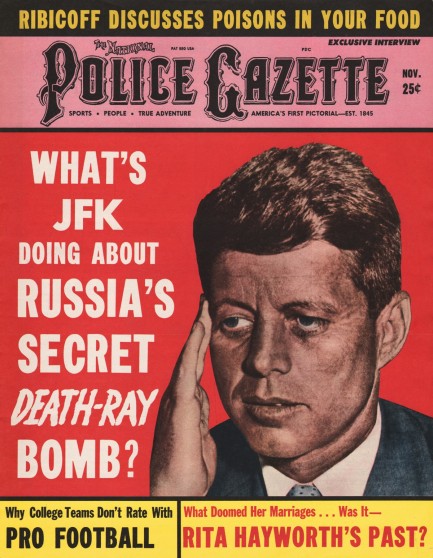
Police Gazette editors hit the panic button with this November 1961 cover claiming the Soviets have a death ray bomb. For a mere twenty-five cents readers were able to acquire new nightmare material by reading about this superweapon, which in the story is called an n-bomb. They’re of course referring to a neutron bomb, which by releasing deadly unshielded neutrons would minimize destruction and contamination of property but maximize human death. Not quite rays, so much as a wave emitted by a massive air burst, but still, the new element it brought to the nuclear party was wantonly scattered neutrons, so, okay—rays it is. It must have been a real stunner for Gazette’s millions of readers to learn of this horrific weapon, but unless the Russian scientist who brainstormed it into existence was named Sam Cohen we have to call bullshit on this tall tale, for it was Samuel T. Cohen—an American physicist—who conceived and developed the neutron bomb. Cohen was an ex-Manhattan Project scientist who spent his career in nukes. He promoted his bomb relentlessly, defending it as “the most sane and moral weapon ever devised,” because “when the war is over, the world is still intact.” See, this is what can happen when you live in a military bubble—Cohen defined morality not by the neutron bomb’s extra-lethal effects on actual living and feeling humans, but by the survival of (reusable) material assets. At its most compact it could blast an area scarcely a mile across, however only a blind man could fail to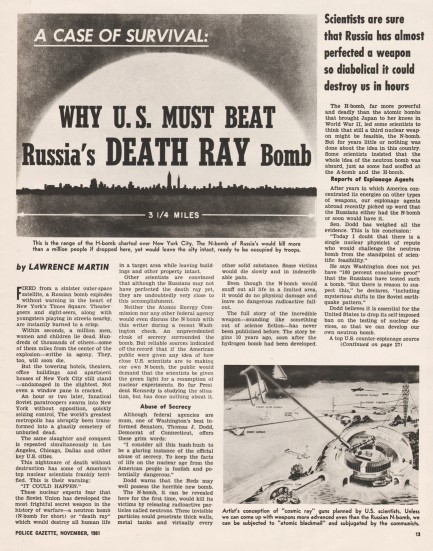 see that tactical neutron weapons were simply the thin edge of a wedge opening a tightly sealed nuclear door. see that tactical neutron weapons were simply the thin edge of a wedge opening a tightly sealed nuclear door. Of course, once the Soviets caught wind of this abomination they developed their own neutron bomb, prompting the U.S. to accelerate its program (see: arms race), until Ronald Reagan ordered 700 finished warheads to be deployed in Europe. It was only mass protest by Europeans—those ungrateful victims of two previous devastating continental wars—that thwarted Reagan’s plans. They realized that neutron weapons made nuclear war more likely, not less likely. If this wasn’t clear enough at the time, it became crystalline when China announced in 1999 that it had built its own neutron bomb. As you have probably deduced by now, the entire point of the Gazette’s death ray story is to urge President John F. Kennedy to get off his ass and develop an American n-bomb to counter the Soviet one. You almost have to wonder if the text was fed to Gazette editors from Sam Cohen’s office. Moving on, Gazette wouldn’t be Gazette without at least a little Hitler, so in addition to the death ray feature it offers up photos of Adolf relaxing with Eva Braun at a retreat in the Bavarian Alps. In contrast to the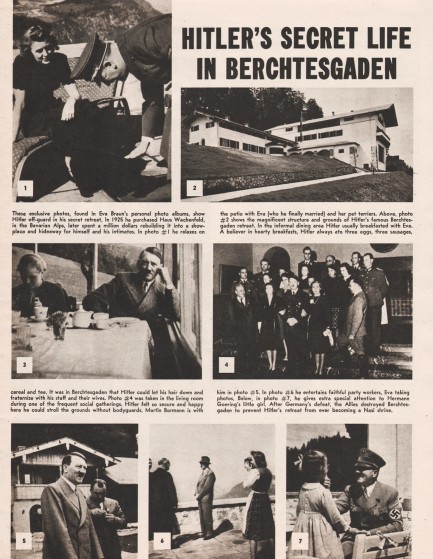 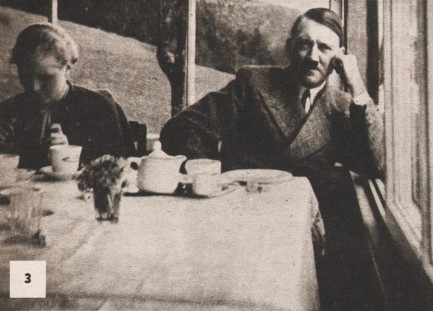 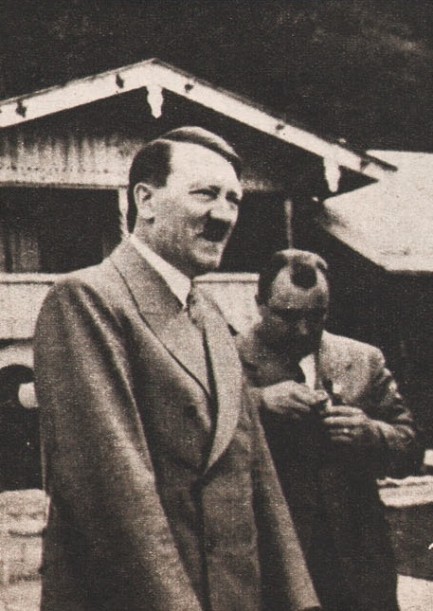 many stories about Hitler living in bitter, defeated isolation in South America, here readers see happy Hitler, socializing during the 1930s with friends and compatriots. Next up, Gazette gives readers their fix of celebrity content with Rita Hayworth, who had been married five times and whose problem the editors are only too happy to diagnose—in their esteemed opinion she’s just too wild to be tamed. And lastly, Gazette presses panic button number two by tying the nascent civil rights movement to communist agitation from overseas. This is a tabloid tale that was told often in the 1960s because, well, we don’t know why exactly—presumably because who besides the puppets of foreign governments would ever deign to demand equal rights? Anyway, we have a few scans below, and an entire stack of early 1970s Gazettes we hope to get to soonish. many stories about Hitler living in bitter, defeated isolation in South America, here readers see happy Hitler, socializing during the 1930s with friends and compatriots. Next up, Gazette gives readers their fix of celebrity content with Rita Hayworth, who had been married five times and whose problem the editors are only too happy to diagnose—in their esteemed opinion she’s just too wild to be tamed. And lastly, Gazette presses panic button number two by tying the nascent civil rights movement to communist agitation from overseas. This is a tabloid tale that was told often in the 1960s because, well, we don’t know why exactly—presumably because who besides the puppets of foreign governments would ever deign to demand equal rights? Anyway, we have a few scans below, and an entire stack of early 1970s Gazettes we hope to get to soonish.
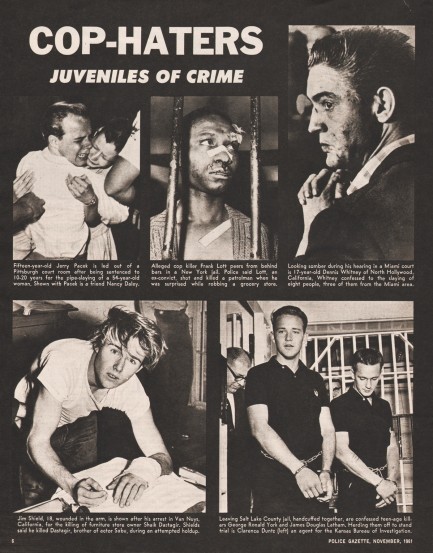 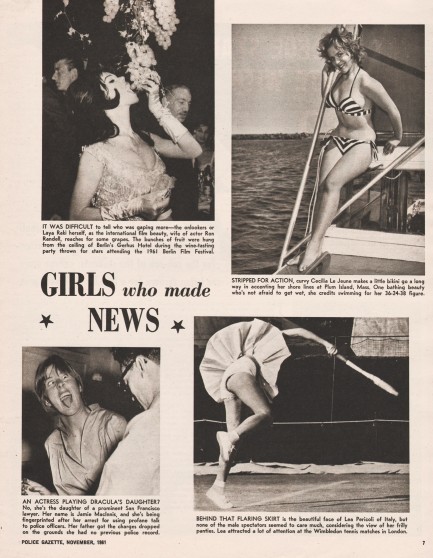 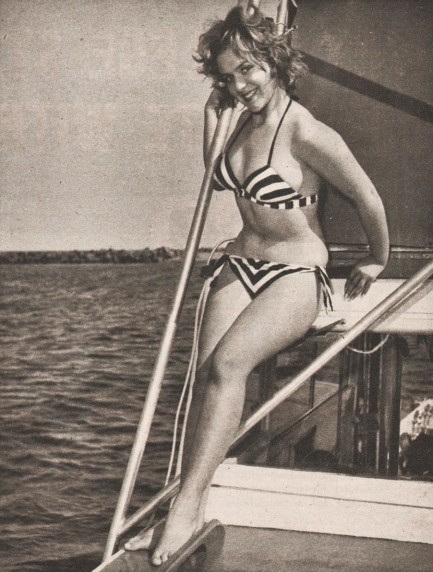 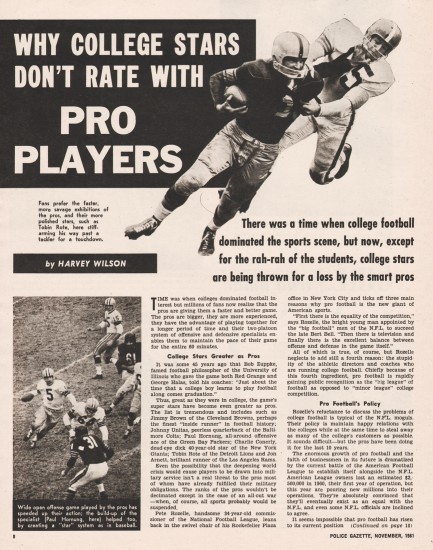 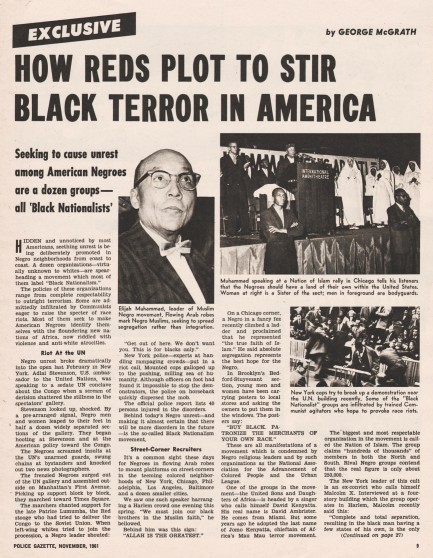 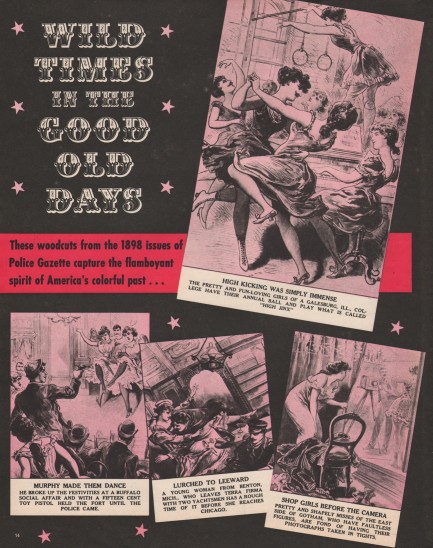 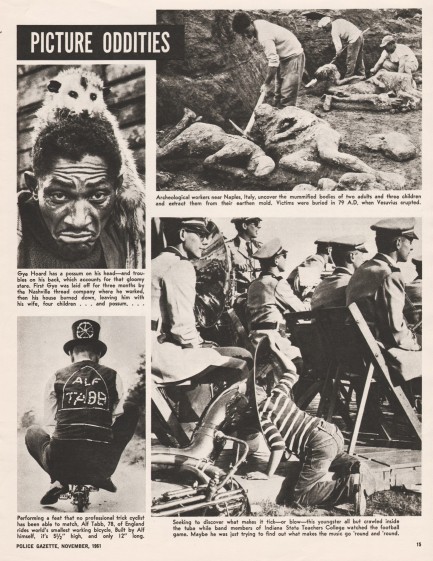 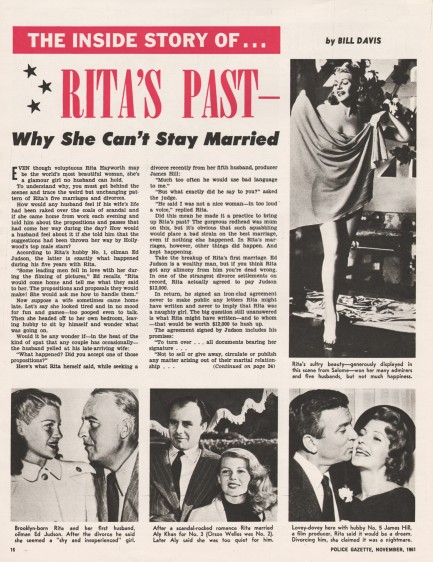
 Fifty years on and the American mainstream media have completely retreated into an alternate reality. 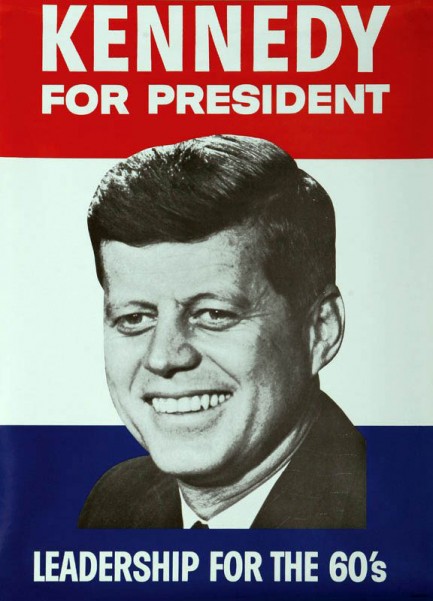
Stories about John F. Kennedy’s assassination have been appearing in the media for several weeks leading up the 50th anniversary of the event, as various outlets try to get ahead of the wave of interest, but we’re purists here, so we’re sharing this poster today, on the actual anniversary of the murder. Let’s get the basics out of the way first. As we’ve mentioned before, a Gallup poll taken days after the killing showed that a majority of Americans believed Oswald was not the only participant. That percentage has gone up since, reaching more than 80%, according to some surveys. That means people who believe Oswald acted with others have always been the majority, and today are the vast majority. That’s something your trusted media outlet always leaves out, doesn’t it? The point is if you think there was a conspiracy, you are the norm, part of an overwhelming norm, rather than some crackpot minority.
It’s an important point because many of the articles published today ask questions like, “Why do people believe in conspiracies?” The problem with that question lies in its framing—it implies that we live in a world that has no or few conspiracies, that it’s silly to believe they exist. That’s very interesting, considering that in the Libor scandal up to 20 major banks conspired to rig interest rates in a $350 trillion derivatives market, that Britain’s spy agency GCHQ conspired to secretly tap into the fiber optic cables that carry the world’s phone calls and internet traffic, that the bank HSBC conspired to launder billions of dollars in South American drug cartel money, that ING conspired to violate sanctions against certain types of business dealings with Cuba and Iran, that News of the World conspired to illegally hack the phones of private citizens, and that Merrill Lynch conspired to deliberately overcharge 95,000 customers $32 million in unwarranted fees. All of these happened in just the last few years. 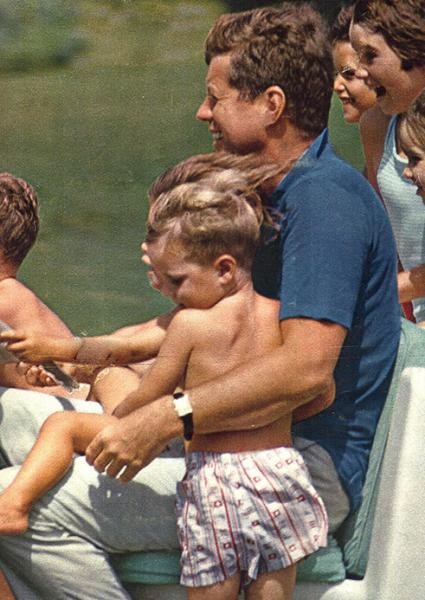 To listen to the mainstream media, you’d almost think there weren’t actual criminal proceedings or lawsuits extant in every example we just mentioned. It takes a willful disconnection from reality to deny how prevalent conspiracies are in modern life when hundreds of perpetrators are at this moment sitting as defendants in court because they were caught conspiring. If we want to delve into a few historical examples of conspiracies, then note that the NSA conspired to mislead the U.S. public about the Gulf of Tonkin incident, that American asbestos companies conspired to cover up the truth about the danger of their product, and that in 1962 the U.S. Joint Chiefs of Staff conspired to kill American citizens. That conspiracy took the form of a proposal called Operation Northwoods. In short, American citizens would have been killed in a series of terrorist bomb attacks that would have been blamed on Cuba. Northwoods was approved for implementation by every one of the sitting Joint Chiefs. Really let that sink in. The only reason the American government did not kill American citizens is because John F. Kennedy said no—he wasn’t interested in committing high treason and murder so he could invade Cuba. To listen to the mainstream media, you’d almost think there weren’t actual criminal proceedings or lawsuits extant in every example we just mentioned. It takes a willful disconnection from reality to deny how prevalent conspiracies are in modern life when hundreds of perpetrators are at this moment sitting as defendants in court because they were caught conspiring. If we want to delve into a few historical examples of conspiracies, then note that the NSA conspired to mislead the U.S. public about the Gulf of Tonkin incident, that American asbestos companies conspired to cover up the truth about the danger of their product, and that in 1962 the U.S. Joint Chiefs of Staff conspired to kill American citizens. That conspiracy took the form of a proposal called Operation Northwoods. In short, American citizens would have been killed in a series of terrorist bomb attacks that would have been blamed on Cuba. Northwoods was approved for implementation by every one of the sitting Joint Chiefs. Really let that sink in. The only reason the American government did not kill American citizens is because John F. Kennedy said no—he wasn’t interested in committing high treason and murder so he could invade Cuba. All of the examples we’ve cited above—a small percentage of the whole, by the way—are incontrovertible historical facts, easily referenced in reams of unearthed documents and on the internet. And all are conspiracies by definition. People who believe Kennedy was victim of a conspiracy are derided as semi-literate fringe crackpots, but that group includes President Lyndon Johnson, First Lady Jackie Kennedy, Robert Kennedy, French president Charles DeGaulle, and Cuban leader Fidel Castro, all of whom voiced disbelief that Oswald acted 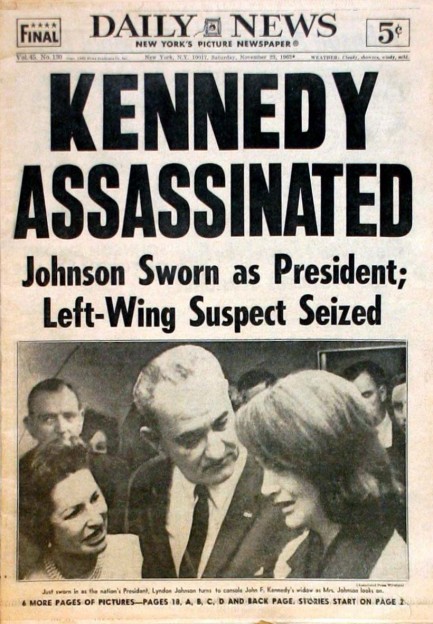 alone. So the question we should be asking today isn’t why so many people believe in conspiracies, but why the mainstream media are so far removed from the factual realities of human, corporate, and political existence, why they are so resistant to the simple truth that conspiracies are how powerful actors circumvent regulations, laws, and democratic rights. Or more to the point, exactly what planet do mainstream journalists live on? Not this one, seemingly. alone. So the question we should be asking today isn’t why so many people believe in conspiracies, but why the mainstream media are so far removed from the factual realities of human, corporate, and political existence, why they are so resistant to the simple truth that conspiracies are how powerful actors circumvent regulations, laws, and democratic rights. Or more to the point, exactly what planet do mainstream journalists live on? Not this one, seemingly. Here at Pulp Intl., we do not style ourselves as truth tellers or serious investigators. We just like pulp art and good white wine, and if we can combine the latter with our naked girlfriends, all the better. We think the question of whether JFK was the victim of a conspiracy needs to be confronted with the proper respect toward the people who believe he was, and the fractional element who believe he wasn't should not automatically be given the high ground. Kennedy was dead before we were born, so in truth, we don’t feel any great passion about it. But to us he is symbolic of the steep decline of the modern American mainstream press. Consider this: in a world where conspiracies incontrovertibly occur, and occur so often that it's actually difficult to keep track of them all, the American press continues to use terms like "conspiracy theory" as an epithet and treats anyone who questions the official JFK assassination story like a fool or a nut case. At the very least, that’s a disservice. At worst it's deliberate social engineering.

|
 |

The headlines that mattered yesteryear.
2003—Hope Dies
Film legend Bob Hope dies of pneumonia two months after celebrating his 100th birthday. 1945—Churchill Given the Sack
In spite of admiring Winston Churchill as a great wartime leader, Britons elect
Clement Attlee the nation's new prime minister in a sweeping victory for the Labour Party over the Conservatives. 1952—Evita Peron Dies
Eva Duarte de Peron, aka Evita, wife of the president of the Argentine Republic, dies from cancer at age 33. Evita had brought the working classes into a position of political power never witnessed before, but was hated by the nation's powerful military class. She is lain to rest in Milan, Italy in a secret grave under a nun's name, but is eventually returned to Argentina for reburial beside her husband in 1974. 1943—Mussolini Calls It Quits
Italian dictator Benito Mussolini steps down as head of the armed forces and the government. It soon becomes clear that Il Duce did not relinquish power voluntarily, but was forced to resign after former Fascist colleagues turned against him. He is later installed by Germany as leader of the Italian Social Republic in the north of the country, but is killed by partisans in 1945.
|

|
|

It's easy. We have an uploader that makes it a snap. Use it to submit your art, text, header, and subhead. Your post can be funny, serious, or anything in between, as long as it's vintage pulp. You'll get a byline and experience the fleeting pride of free authorship. We'll edit your post for typos, but the rest is up to you. Click here to give us your best shot.

|
|






































































 Is its headline about her touching the gun that killed Oswald factual? Well, Ruby was arrested at the scene of the shooting. The only time True could have touched the gun was before the murder. Ruby always carried a weapon because he always had club receipts on him, so it's very possible he let True handle it at some point, but True has never confirmed the story. The main reason we tend to doubt it is because she has always been vocal about how angry she was to be outed as a stripper. Before the shooting only her friends and family knew she danced. We can't imagine her sitting down and giving Chronicle an interview. But you never know. See more from National Star Chronicle by clicking here or here.
Is its headline about her touching the gun that killed Oswald factual? Well, Ruby was arrested at the scene of the shooting. The only time True could have touched the gun was before the murder. Ruby always carried a weapon because he always had club receipts on him, so it's very possible he let True handle it at some point, but True has never confirmed the story. The main reason we tend to doubt it is because she has always been vocal about how angry she was to be outed as a stripper. Before the shooting only her friends and family knew she danced. We can't imagine her sitting down and giving Chronicle an interview. But you never know. See more from National Star Chronicle by clicking here or here. 













































 see that tactical neutron weapons were simply the thin edge of a wedge opening a tightly sealed nuclear door.
see that tactical neutron weapons were simply the thin edge of a wedge opening a tightly sealed nuclear door.

 many stories about Hitler living in bitter, defeated isolation in South America, here readers see happy Hitler, socializing during the 1930s with friends and compatriots. Next up, Gazette gives readers their fix of celebrity content with Rita Hayworth, who had been married five times and whose problem the editors are only too happy to diagnose—in their esteemed opinion she’s just too wild to be tamed. And lastly, Gazette presses panic button number two by tying the nascent civil rights movement to communist agitation from overseas. This is a tabloid tale that was told often in the 1960s because, well, we don’t know why exactly—presumably because who besides the puppets of foreign governments would ever deign to demand equal rights? Anyway, we have a few scans below, and an entire stack of early 1970s Gazettes we hope to get to soonish.
many stories about Hitler living in bitter, defeated isolation in South America, here readers see happy Hitler, socializing during the 1930s with friends and compatriots. Next up, Gazette gives readers their fix of celebrity content with Rita Hayworth, who had been married five times and whose problem the editors are only too happy to diagnose—in their esteemed opinion she’s just too wild to be tamed. And lastly, Gazette presses panic button number two by tying the nascent civil rights movement to communist agitation from overseas. This is a tabloid tale that was told often in the 1960s because, well, we don’t know why exactly—presumably because who besides the puppets of foreign governments would ever deign to demand equal rights? Anyway, we have a few scans below, and an entire stack of early 1970s Gazettes we hope to get to soonish. 









 To listen to the mainstream media, you’d almost think there weren’t actual criminal proceedings or lawsuits extant in every example we just mentioned. It takes a willful disconnection from reality to deny how prevalent conspiracies are in modern life when hundreds of perpetrators are at this moment sitting as defendants in court because they were caught conspiring. If we want to delve into a few historical examples of conspiracies, then note that the NSA conspired to mislead the U.S. public about the Gulf of Tonkin incident, that American asbestos companies conspired to cover up the truth about the danger of their product, and that in 1962 the U.S. Joint Chiefs of Staff conspired to kill American citizens. That conspiracy took the form of a proposal called Operation Northwoods. In short, American citizens would have been killed in a series of terrorist bomb attacks that would have been blamed on Cuba. Northwoods was approved for implementation by every one of the sitting Joint Chiefs. Really let that sink in. The only reason the American government did not kill American citizens is because John F. Kennedy said no—he wasn’t interested in committing high treason and murder so he could invade Cuba.
To listen to the mainstream media, you’d almost think there weren’t actual criminal proceedings or lawsuits extant in every example we just mentioned. It takes a willful disconnection from reality to deny how prevalent conspiracies are in modern life when hundreds of perpetrators are at this moment sitting as defendants in court because they were caught conspiring. If we want to delve into a few historical examples of conspiracies, then note that the NSA conspired to mislead the U.S. public about the Gulf of Tonkin incident, that American asbestos companies conspired to cover up the truth about the danger of their product, and that in 1962 the U.S. Joint Chiefs of Staff conspired to kill American citizens. That conspiracy took the form of a proposal called Operation Northwoods. In short, American citizens would have been killed in a series of terrorist bomb attacks that would have been blamed on Cuba. Northwoods was approved for implementation by every one of the sitting Joint Chiefs. Really let that sink in. The only reason the American government did not kill American citizens is because John F. Kennedy said no—he wasn’t interested in committing high treason and murder so he could invade Cuba. alone. So the question we should be asking today isn’t why so many people believe in conspiracies, but why the mainstream media are so far removed from the factual realities of human, corporate, and political existence, why they are so resistant to the simple truth that conspiracies are how powerful actors circumvent regulations, laws, and democratic rights. Or more to the point, exactly what planet do mainstream journalists live on? Not this one, seemingly.
alone. So the question we should be asking today isn’t why so many people believe in conspiracies, but why the mainstream media are so far removed from the factual realities of human, corporate, and political existence, why they are so resistant to the simple truth that conspiracies are how powerful actors circumvent regulations, laws, and democratic rights. Or more to the point, exactly what planet do mainstream journalists live on? Not this one, seemingly.




































































